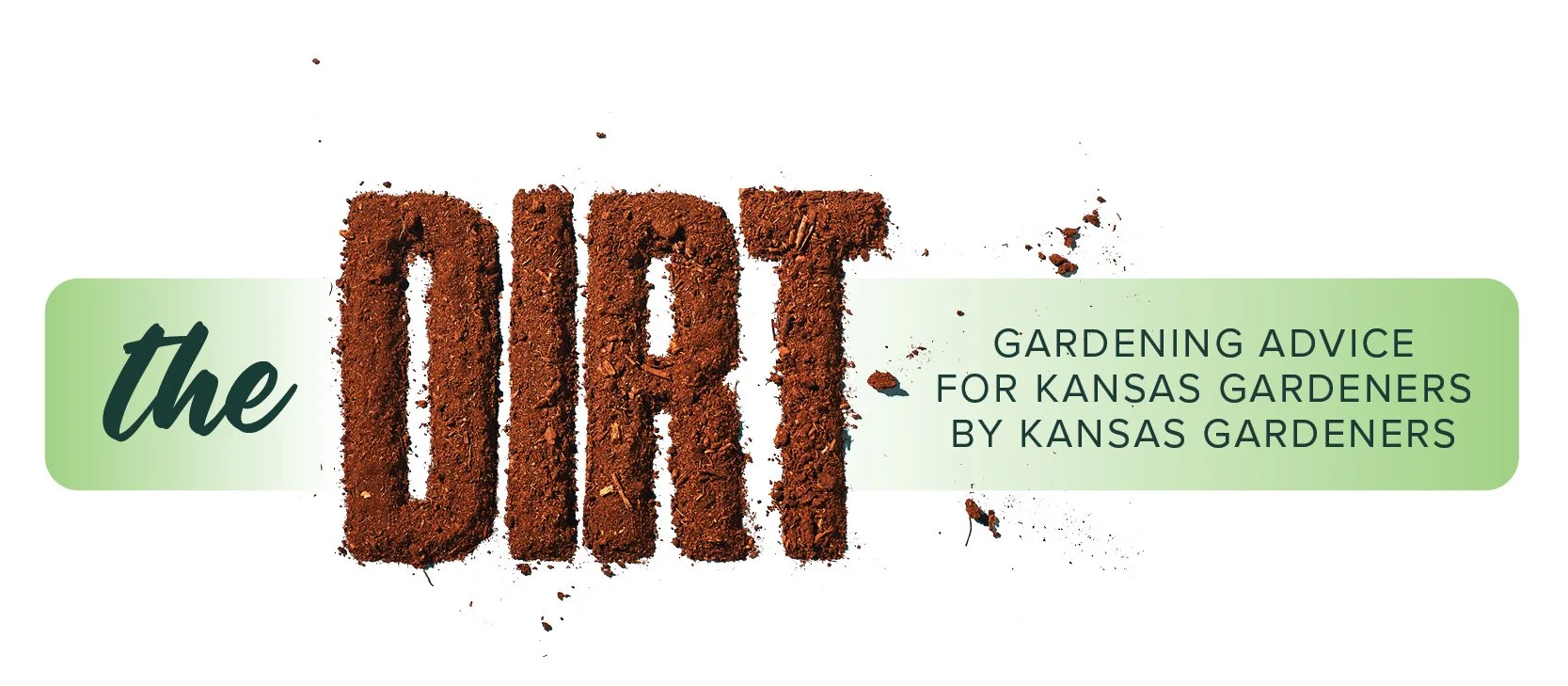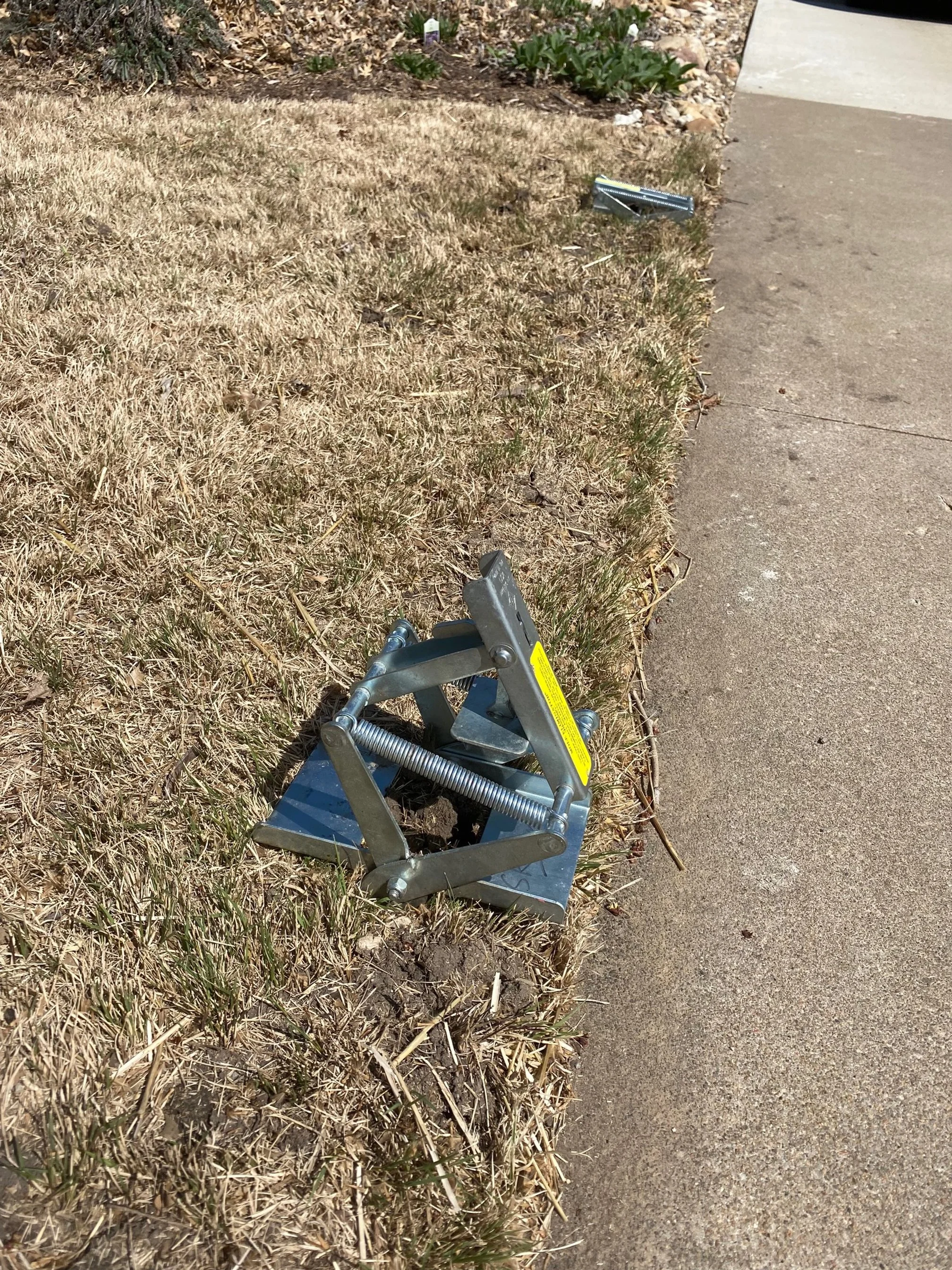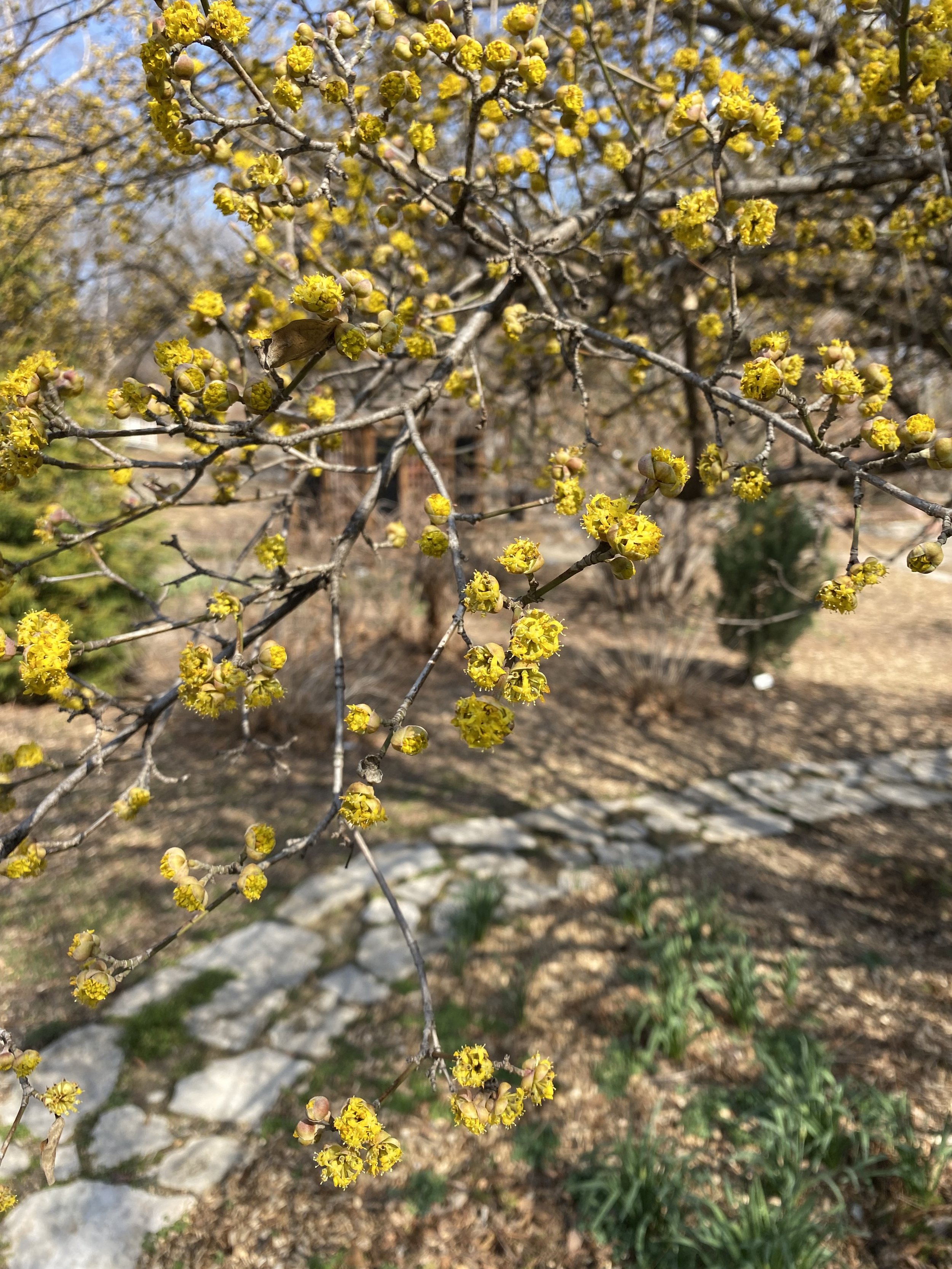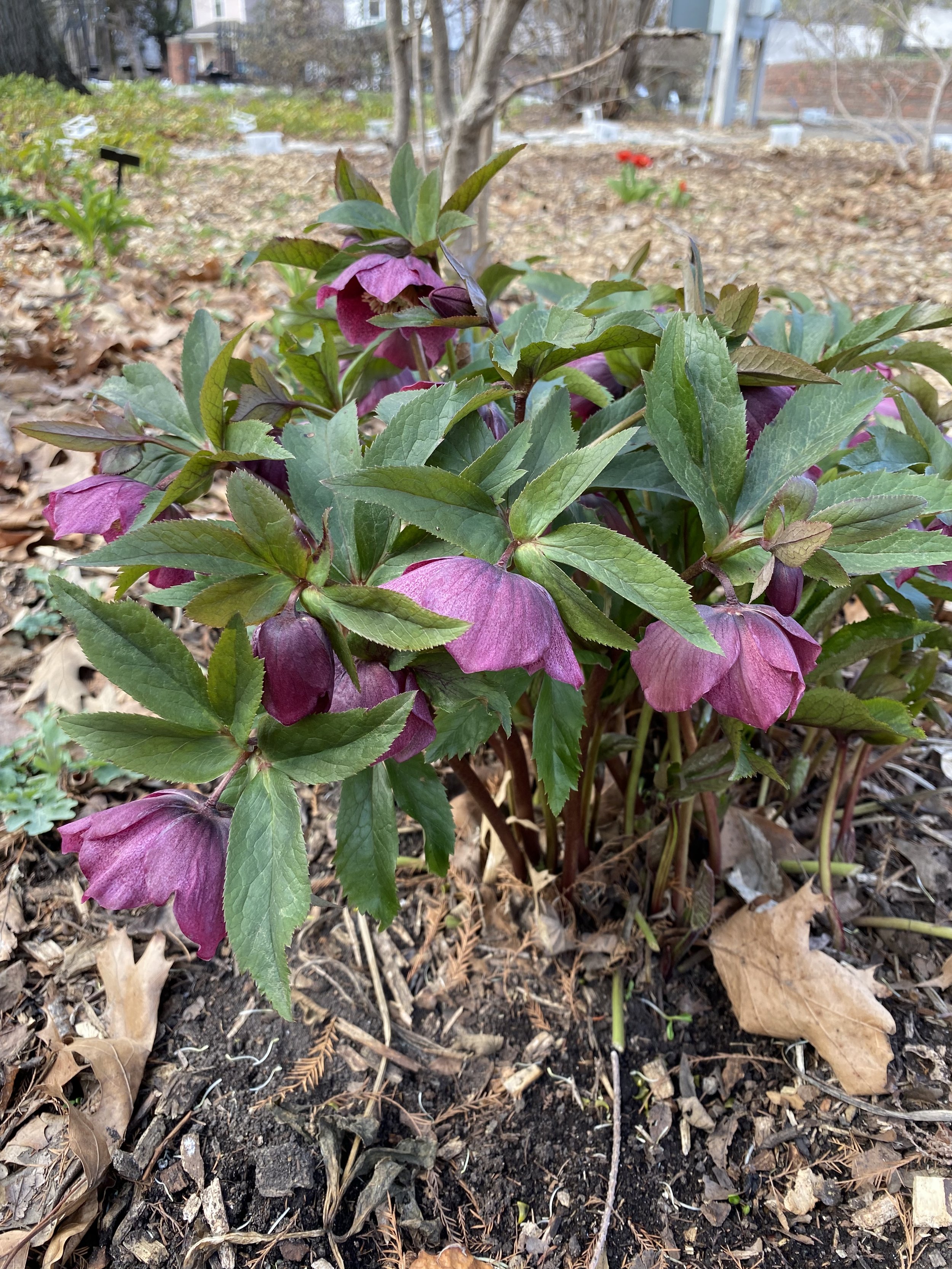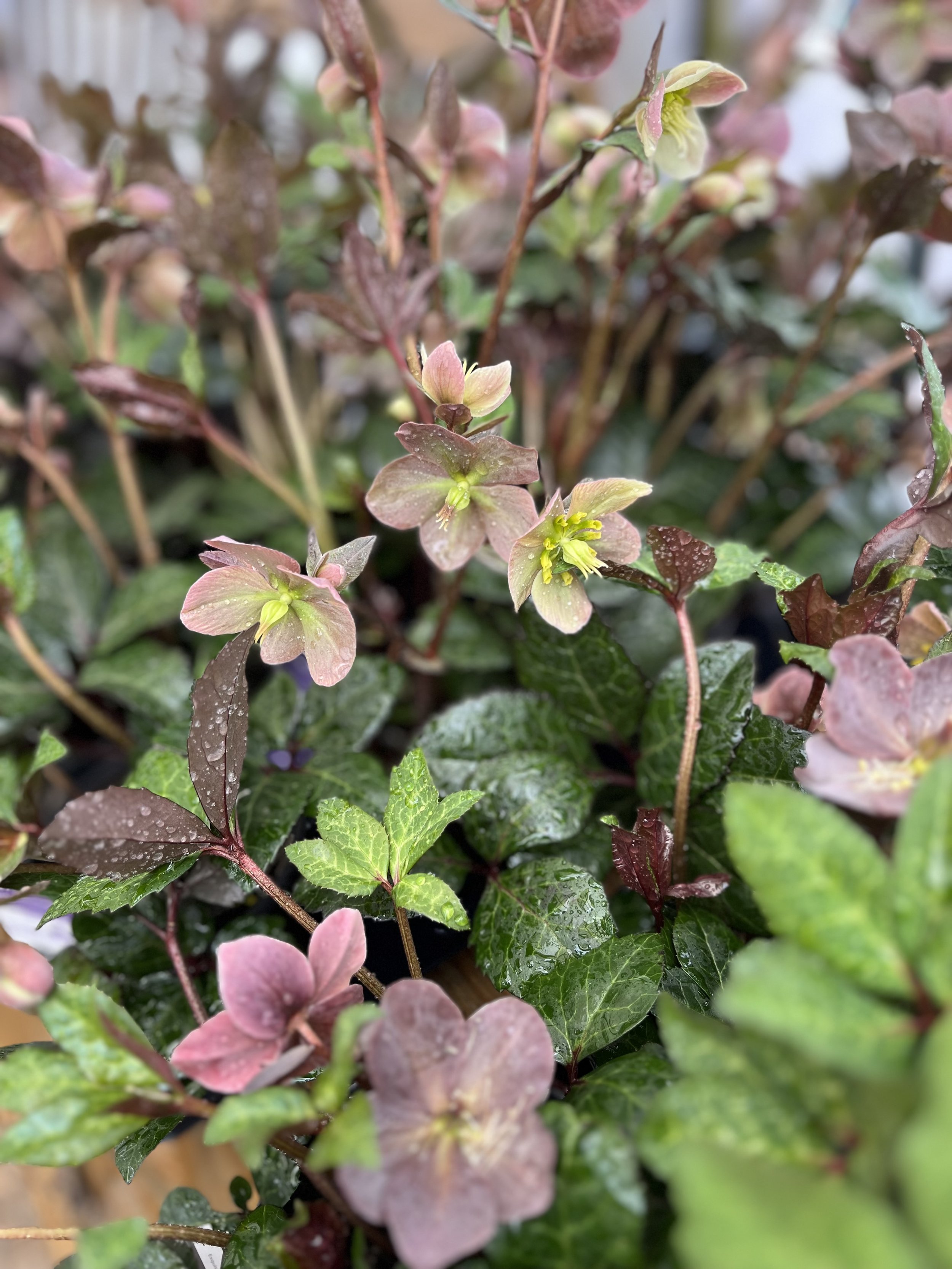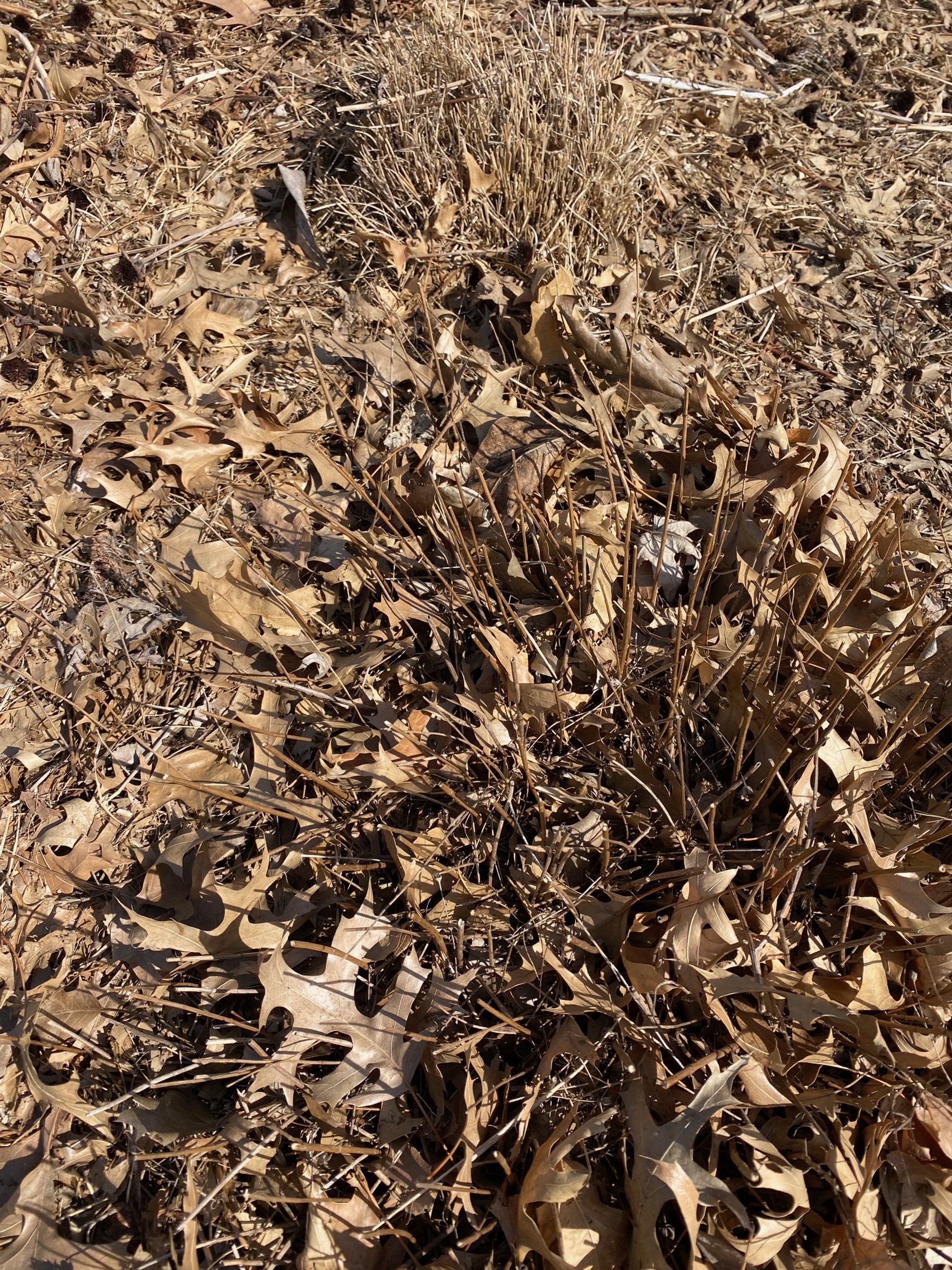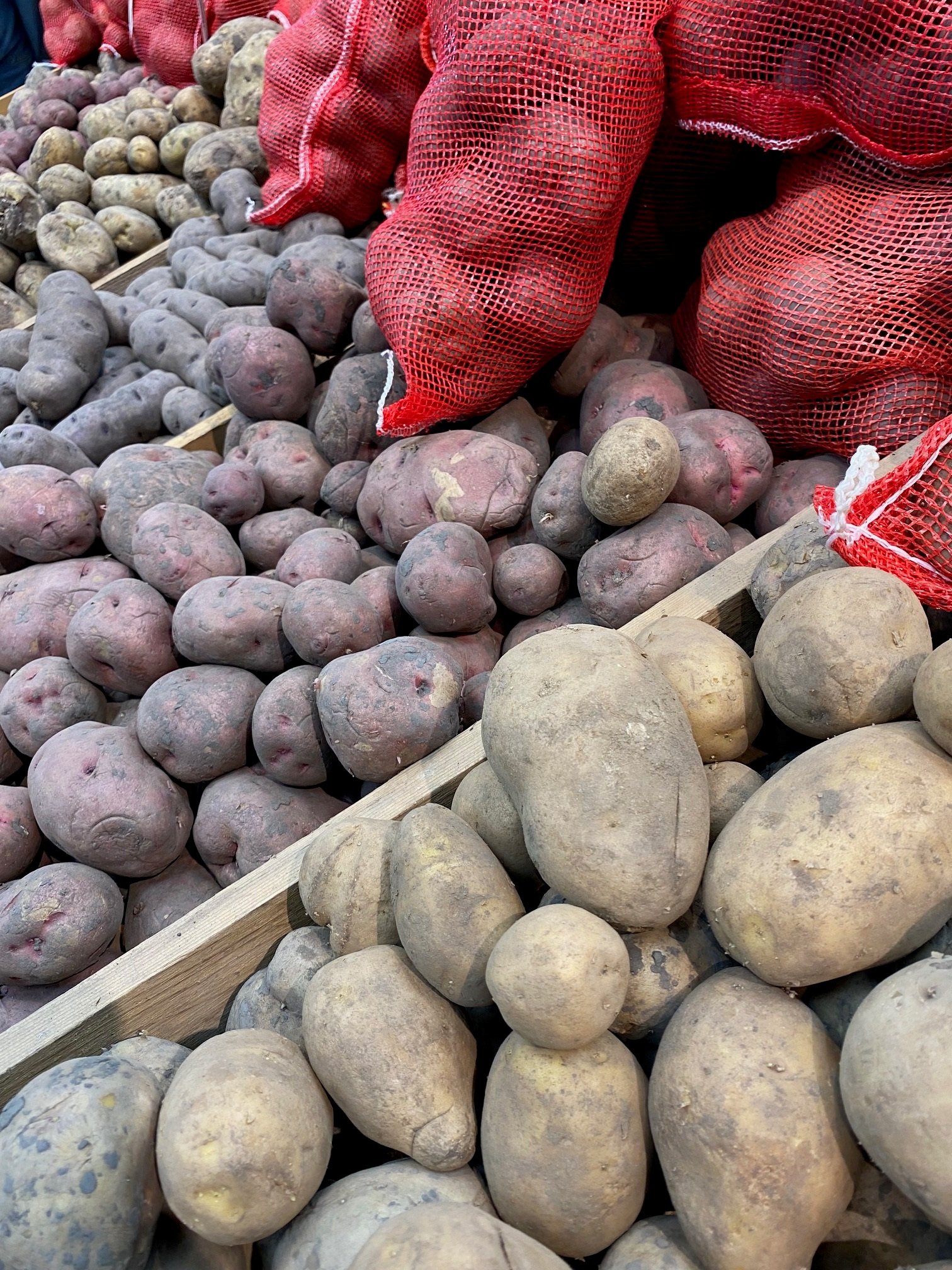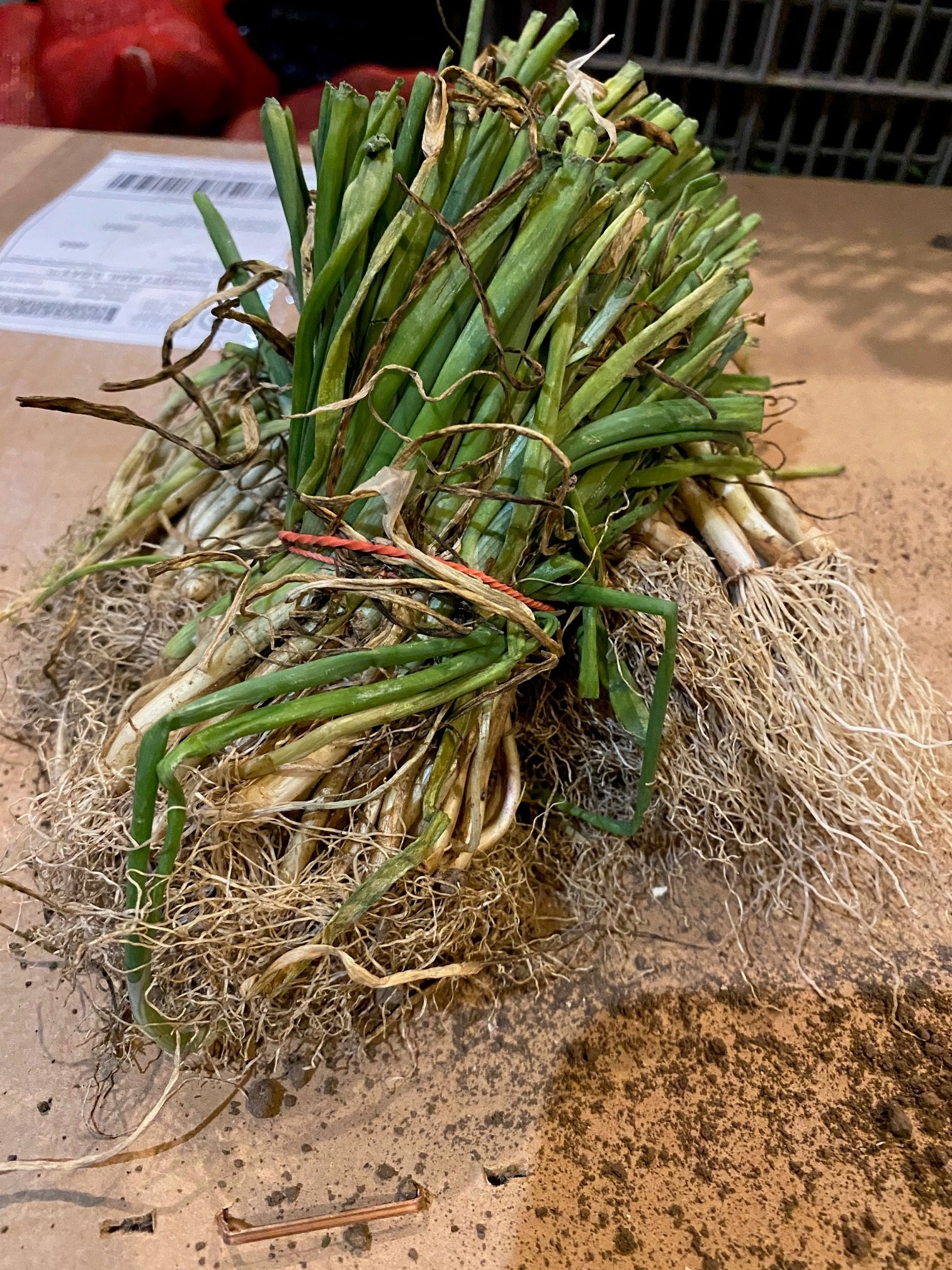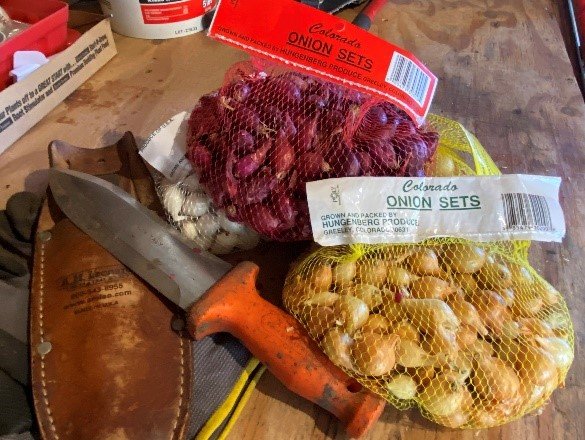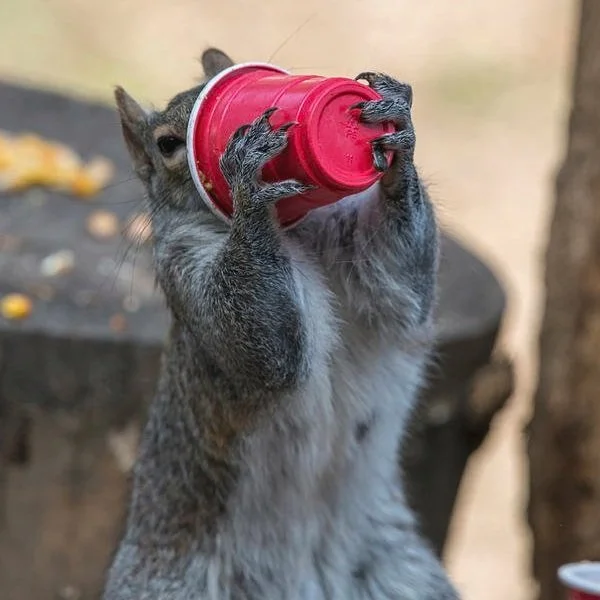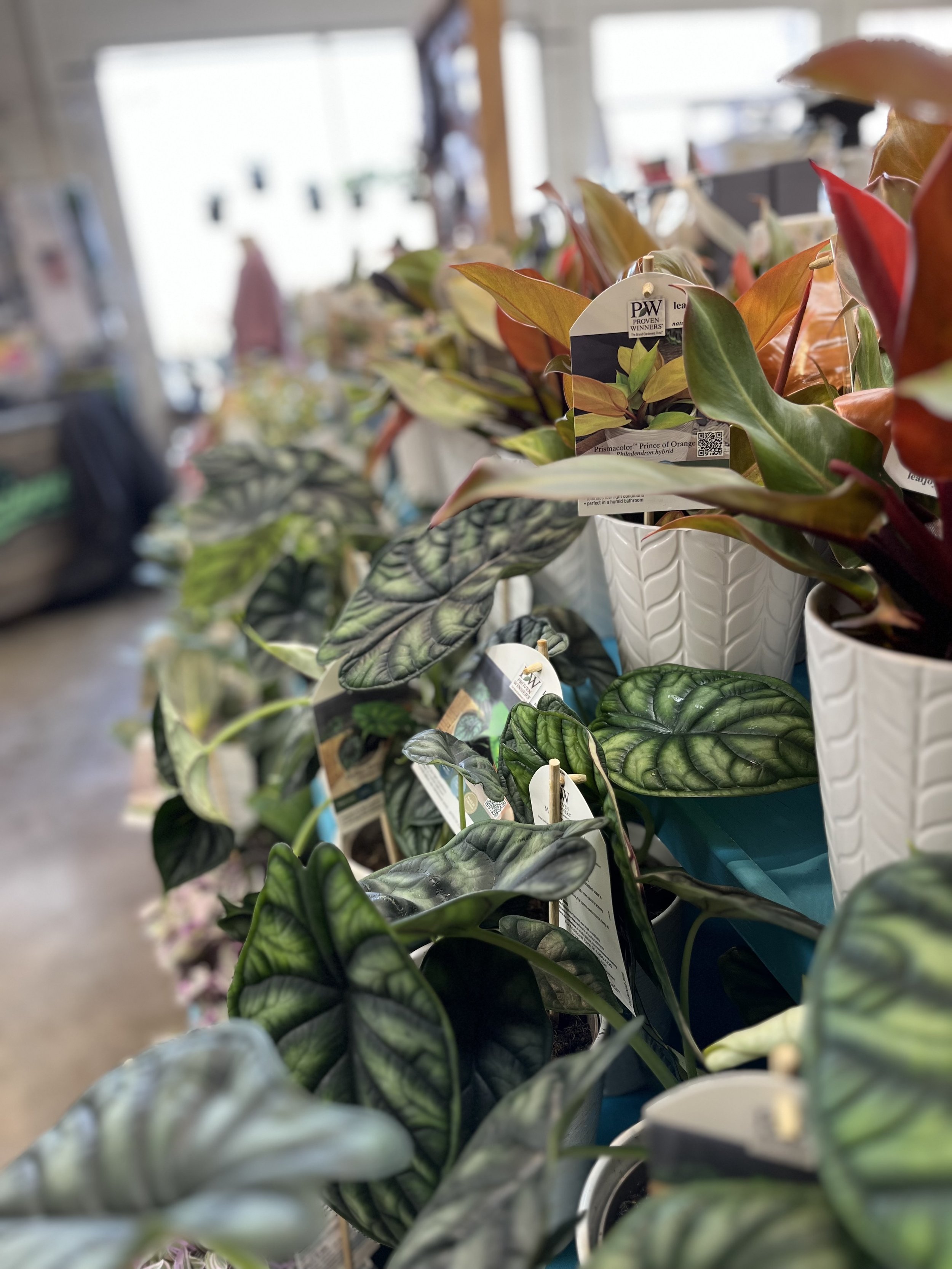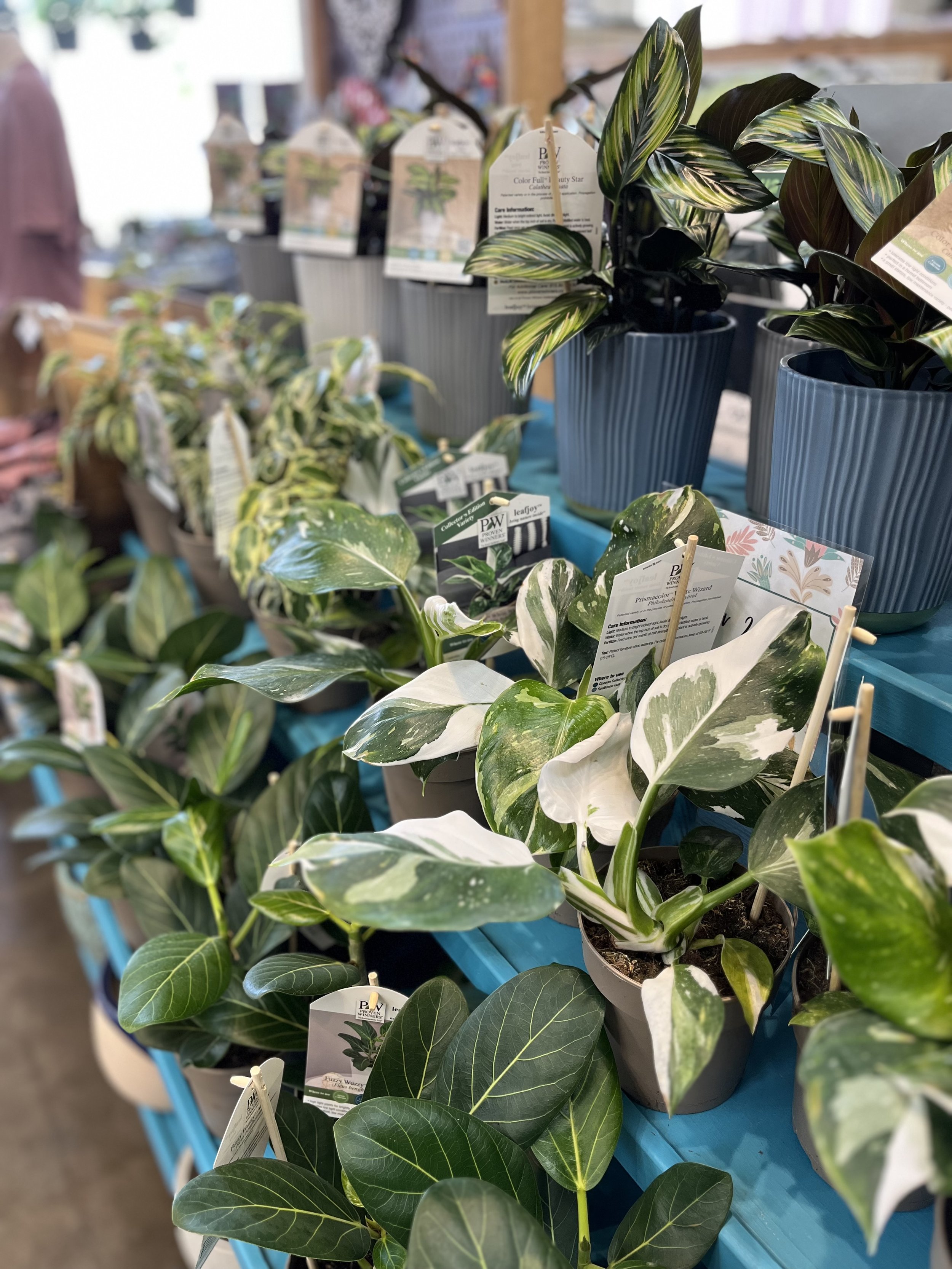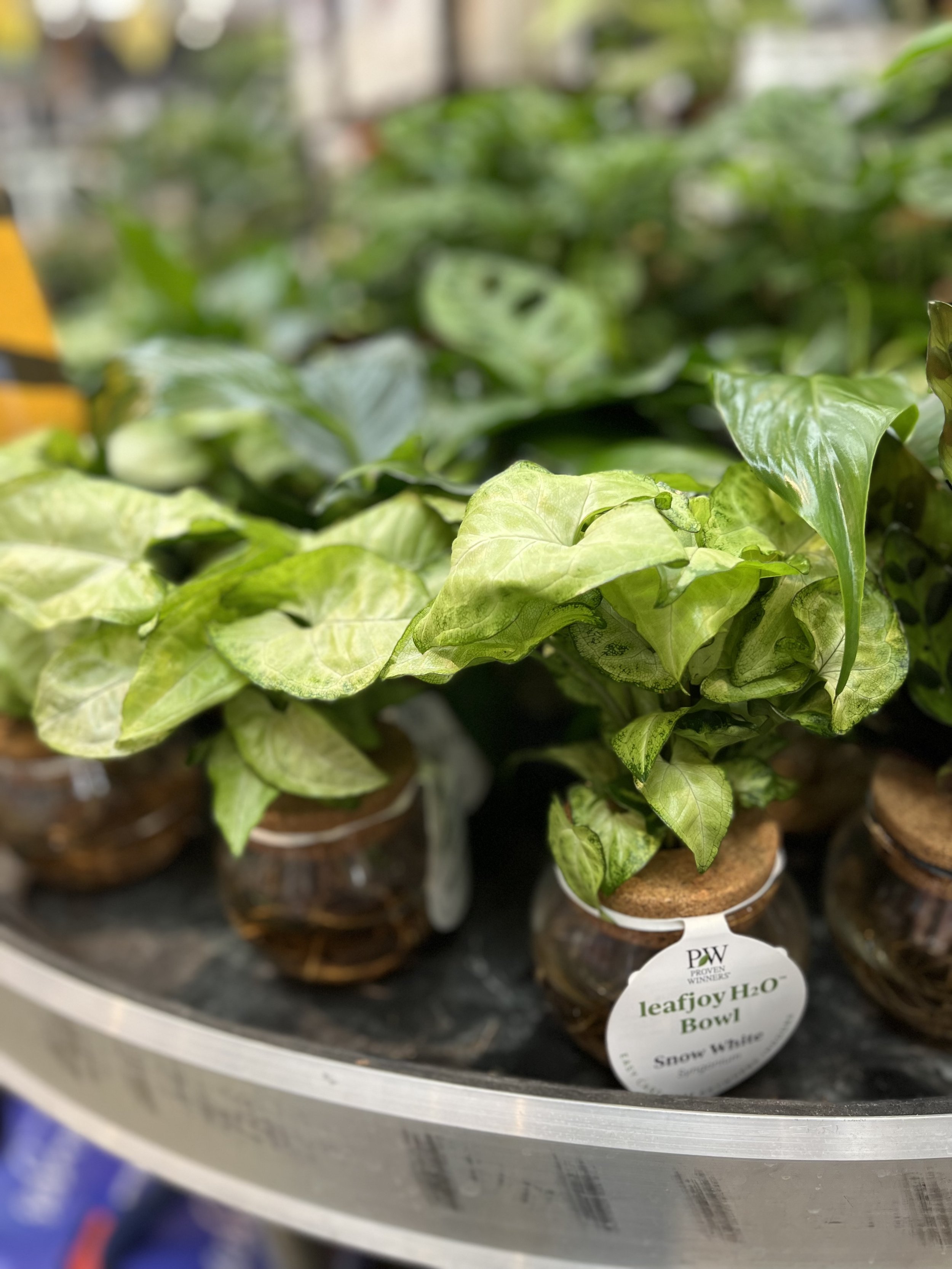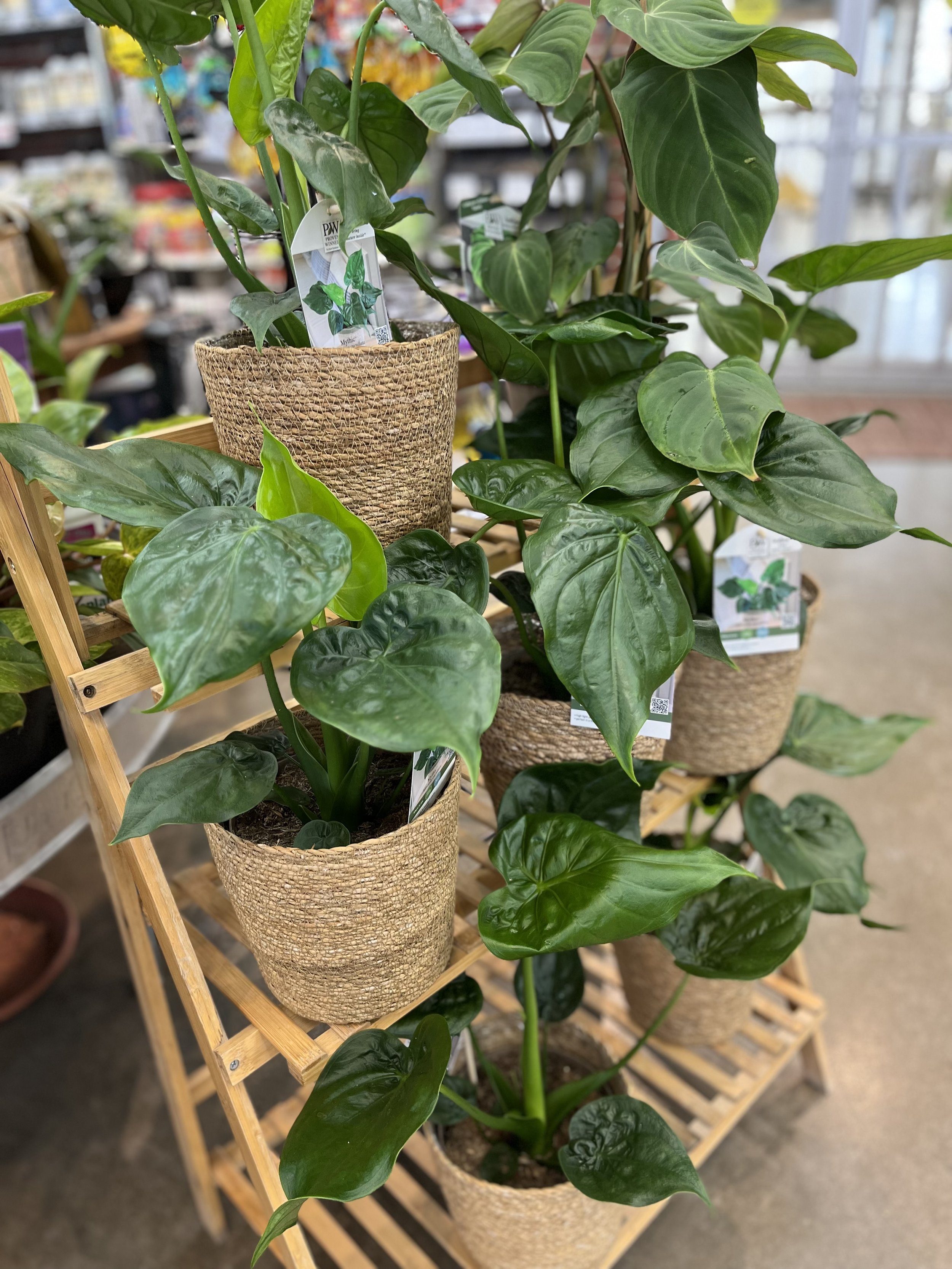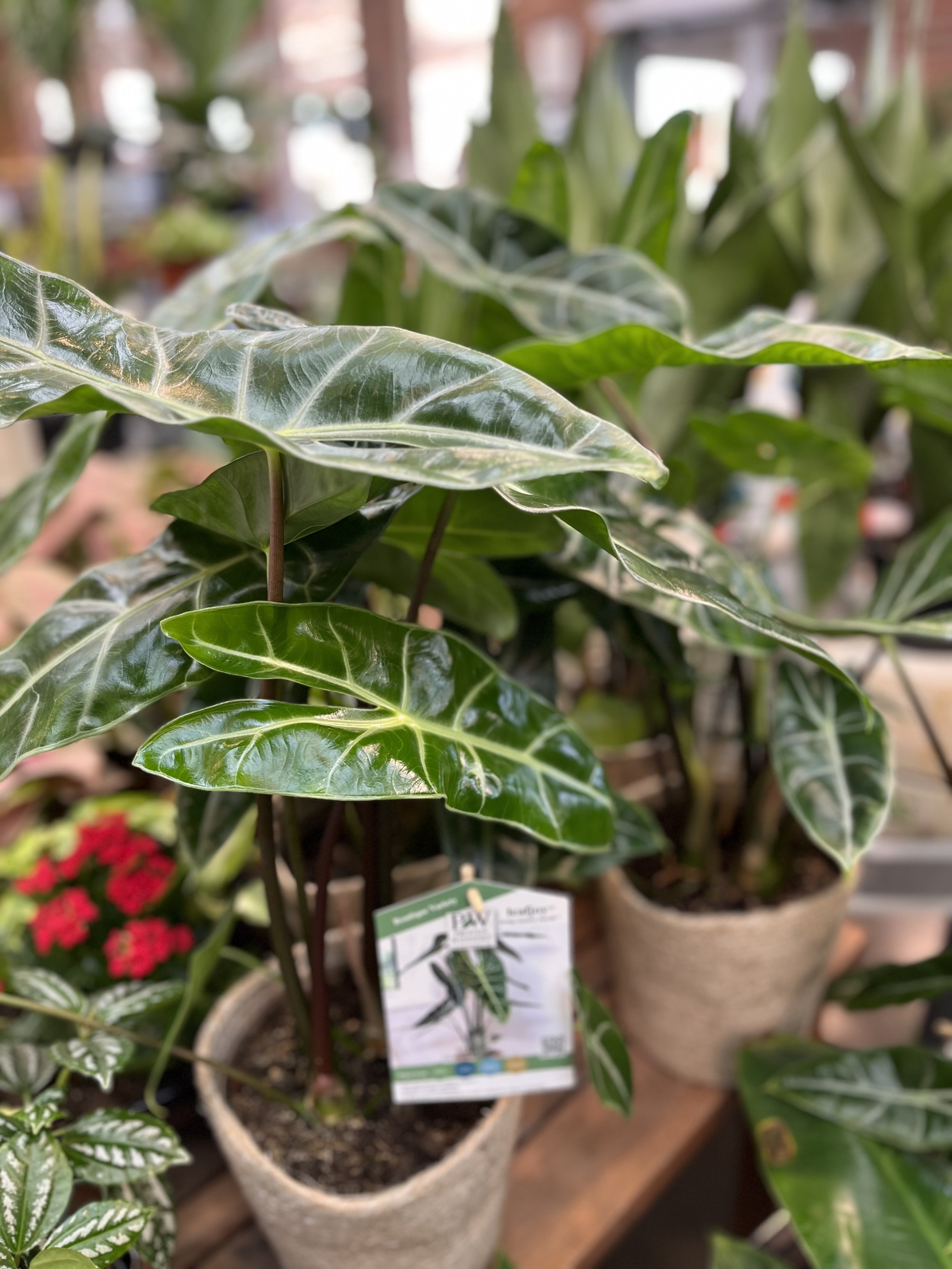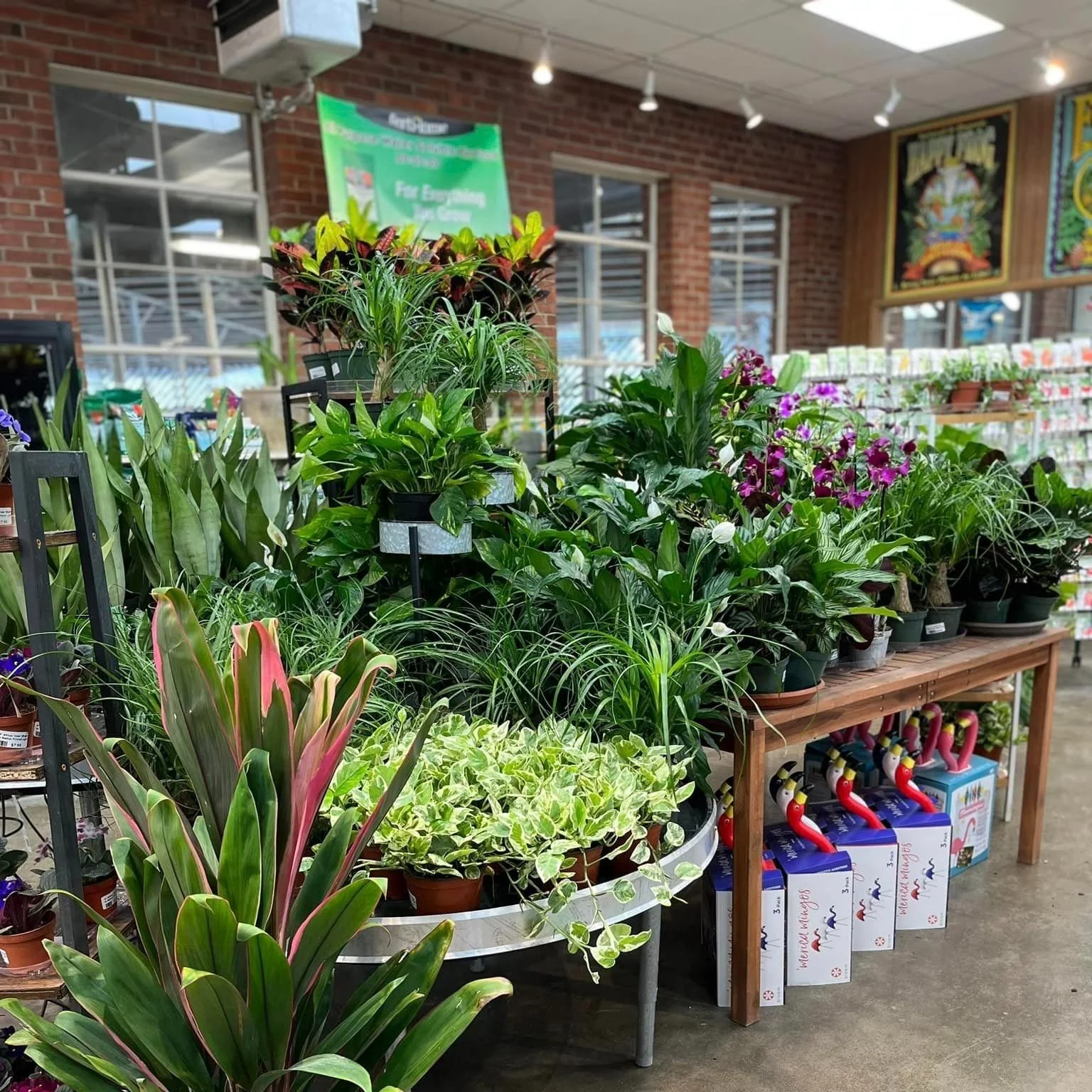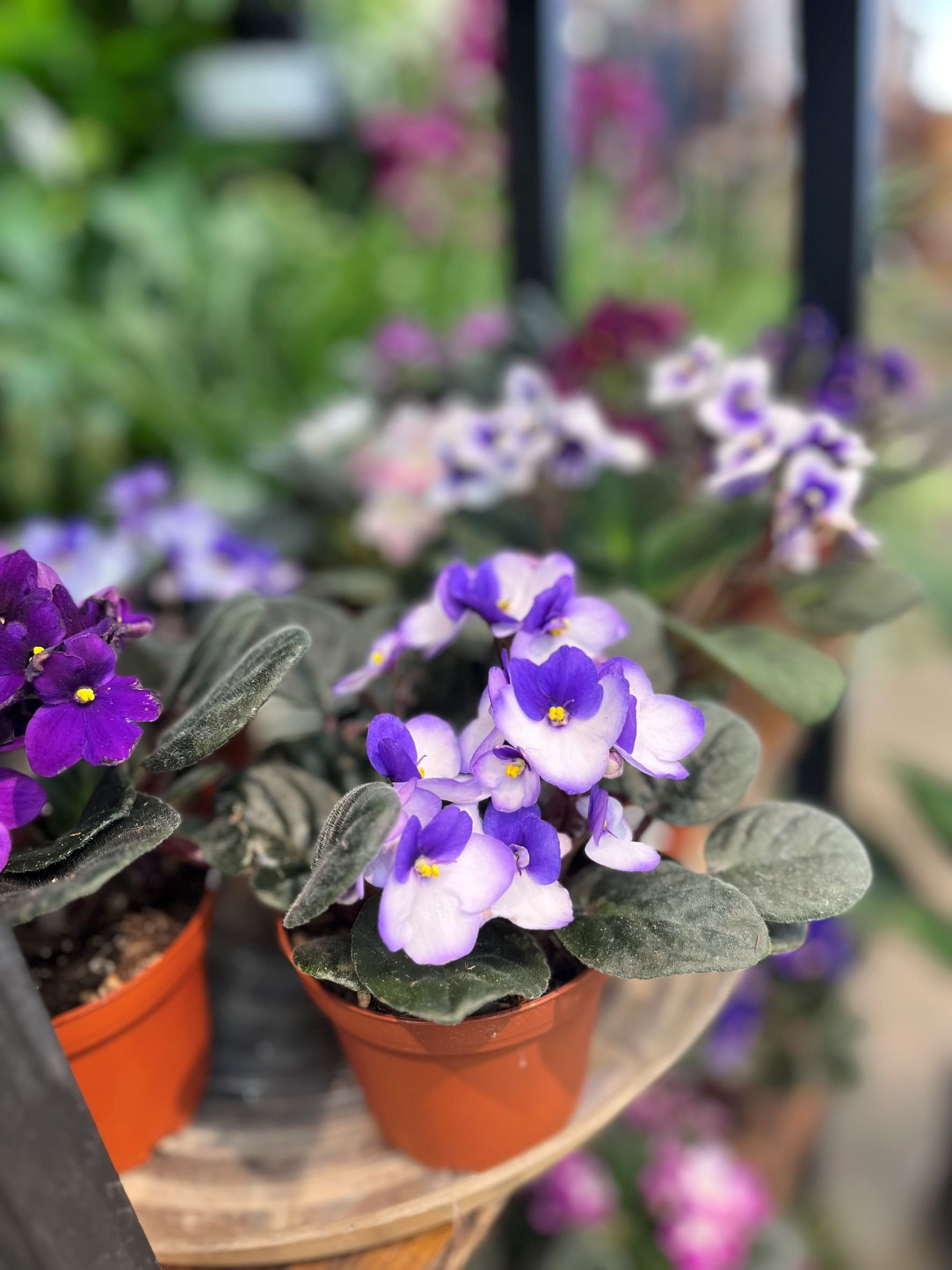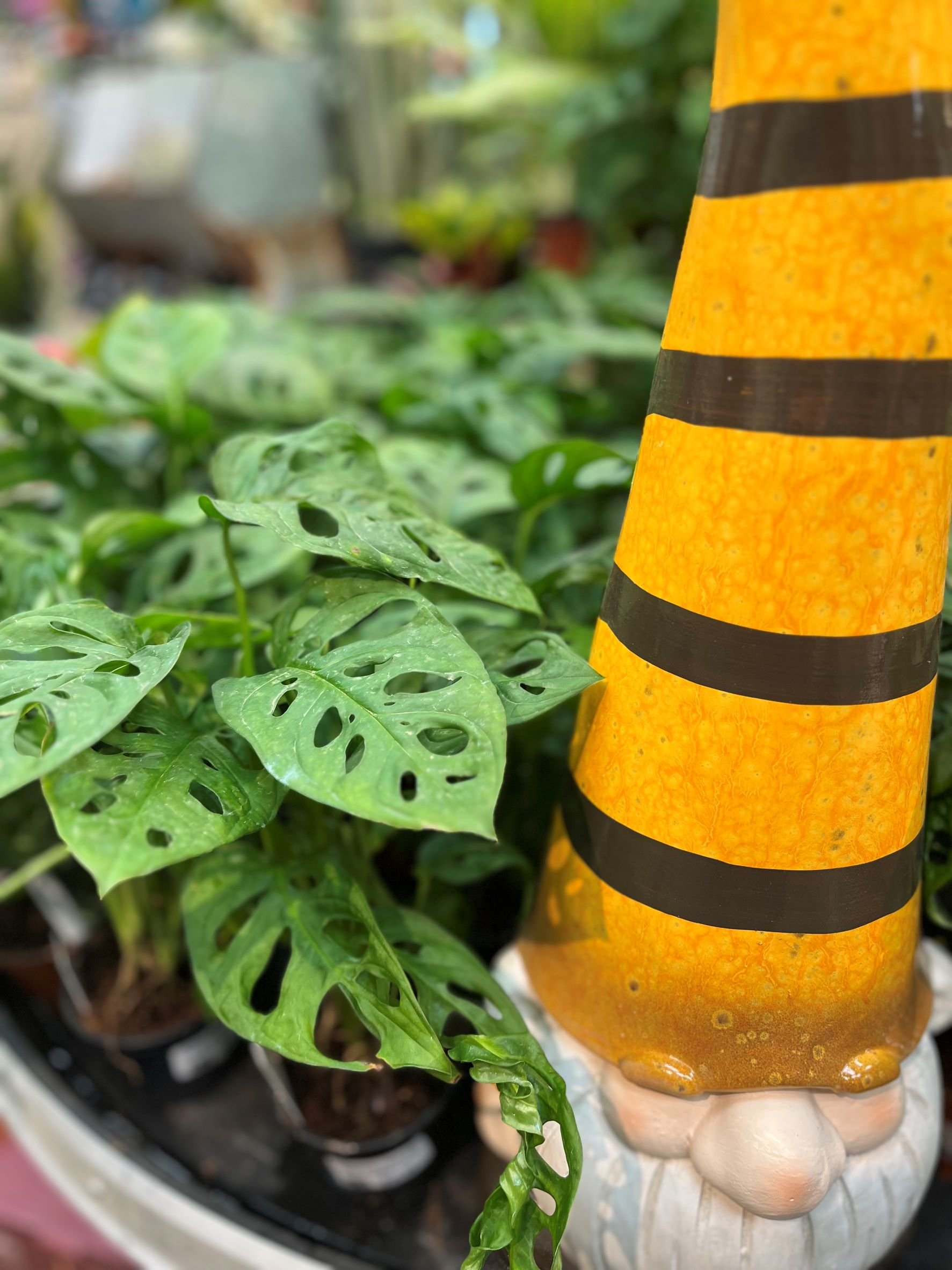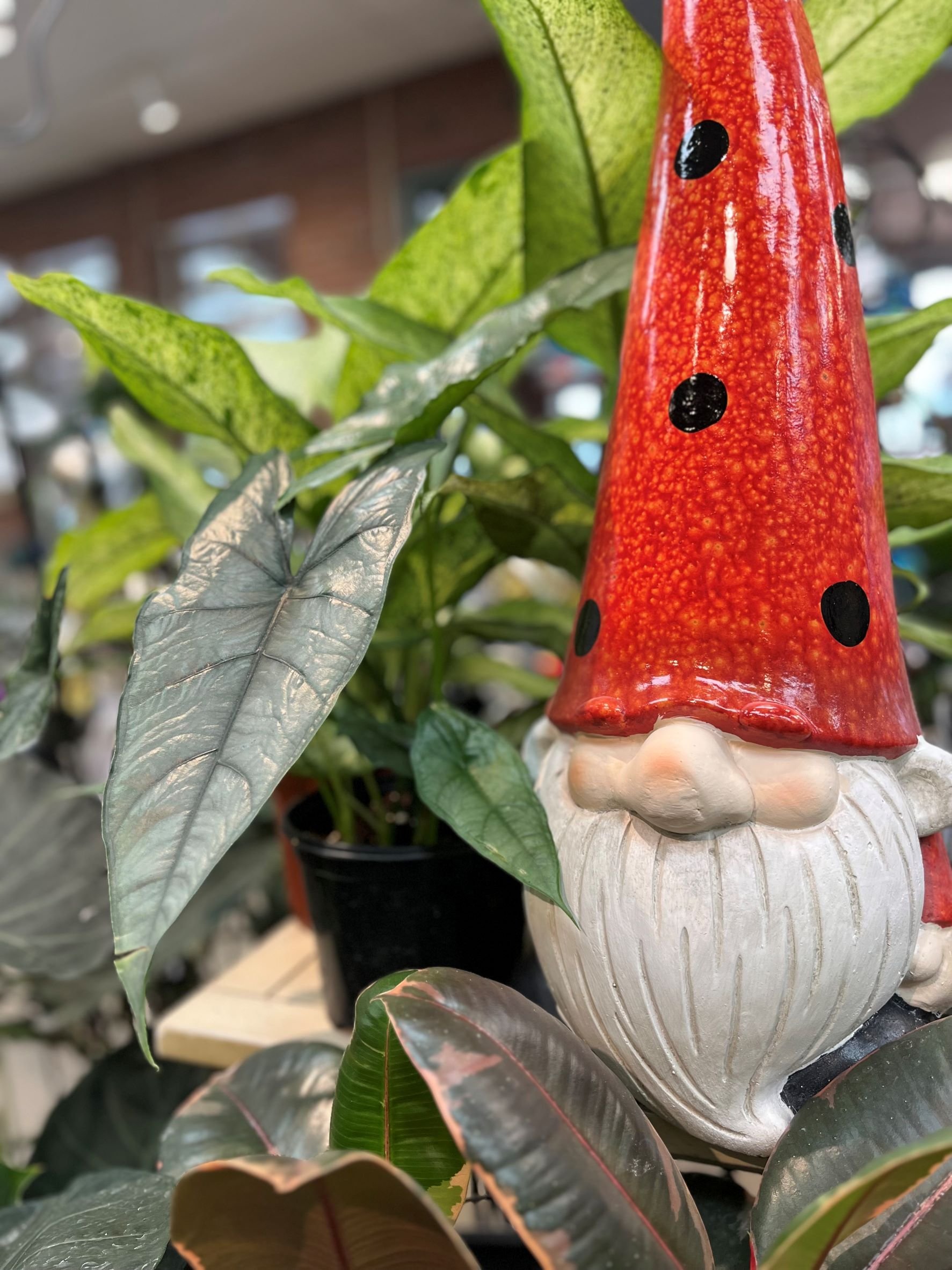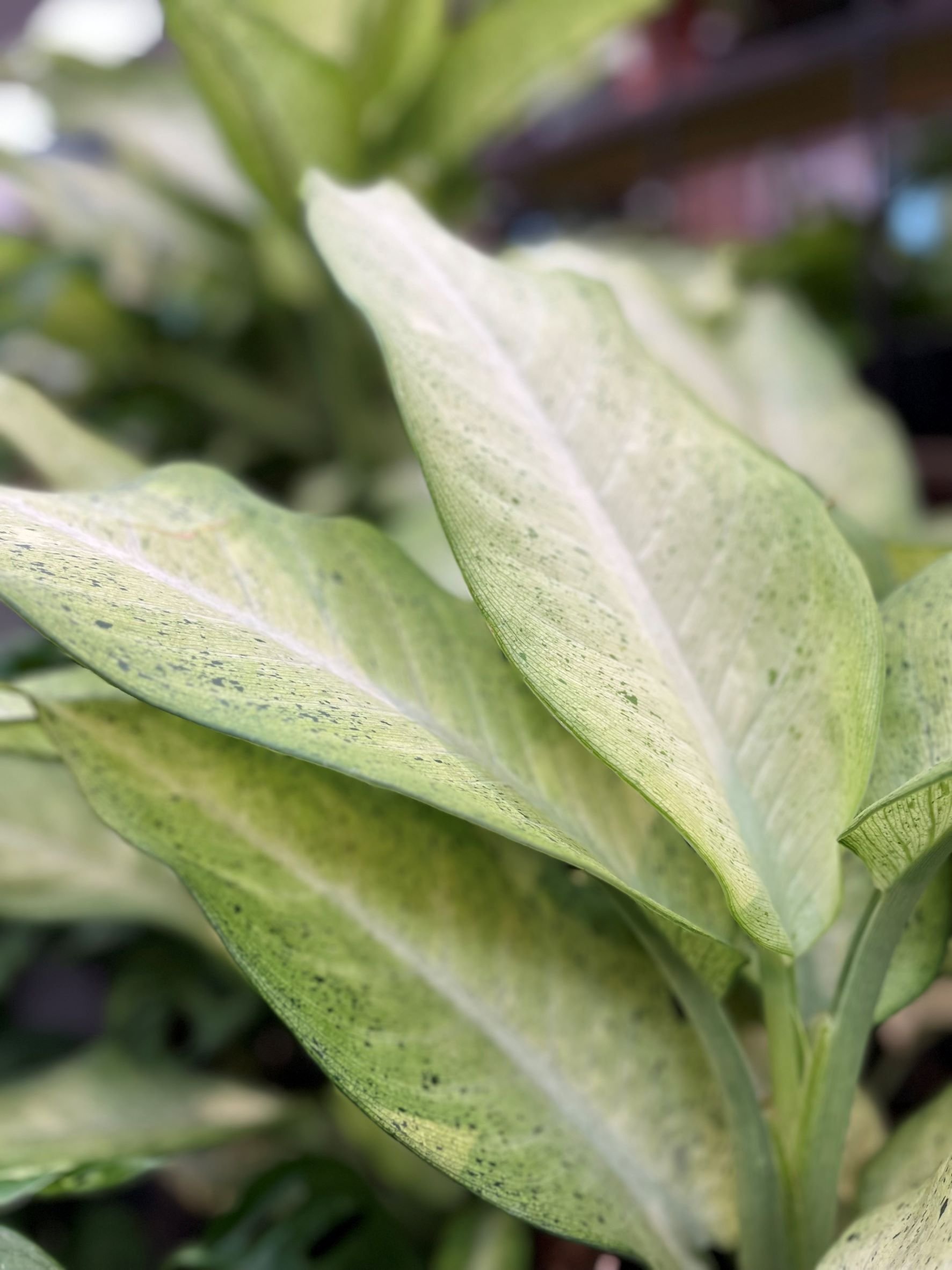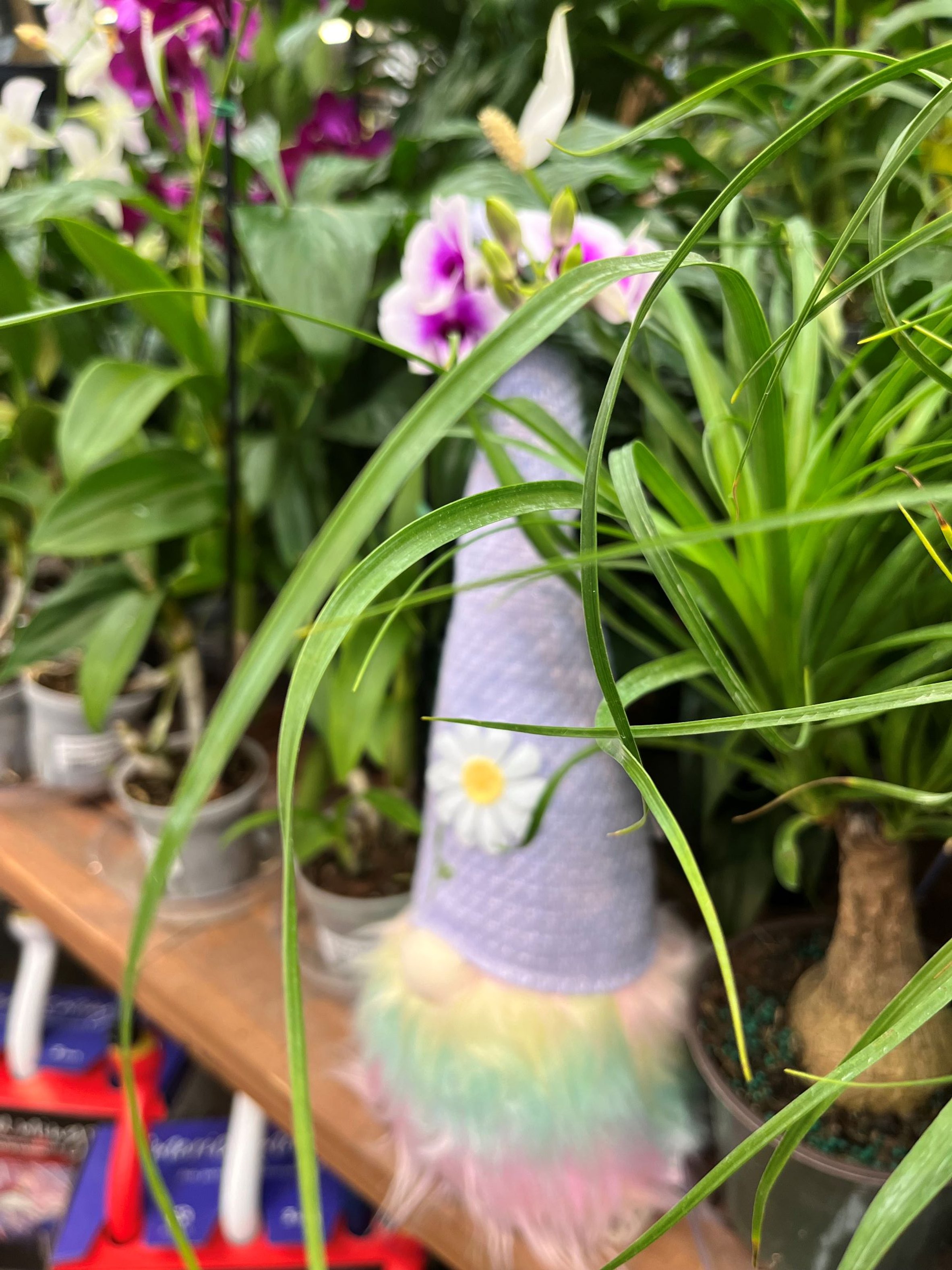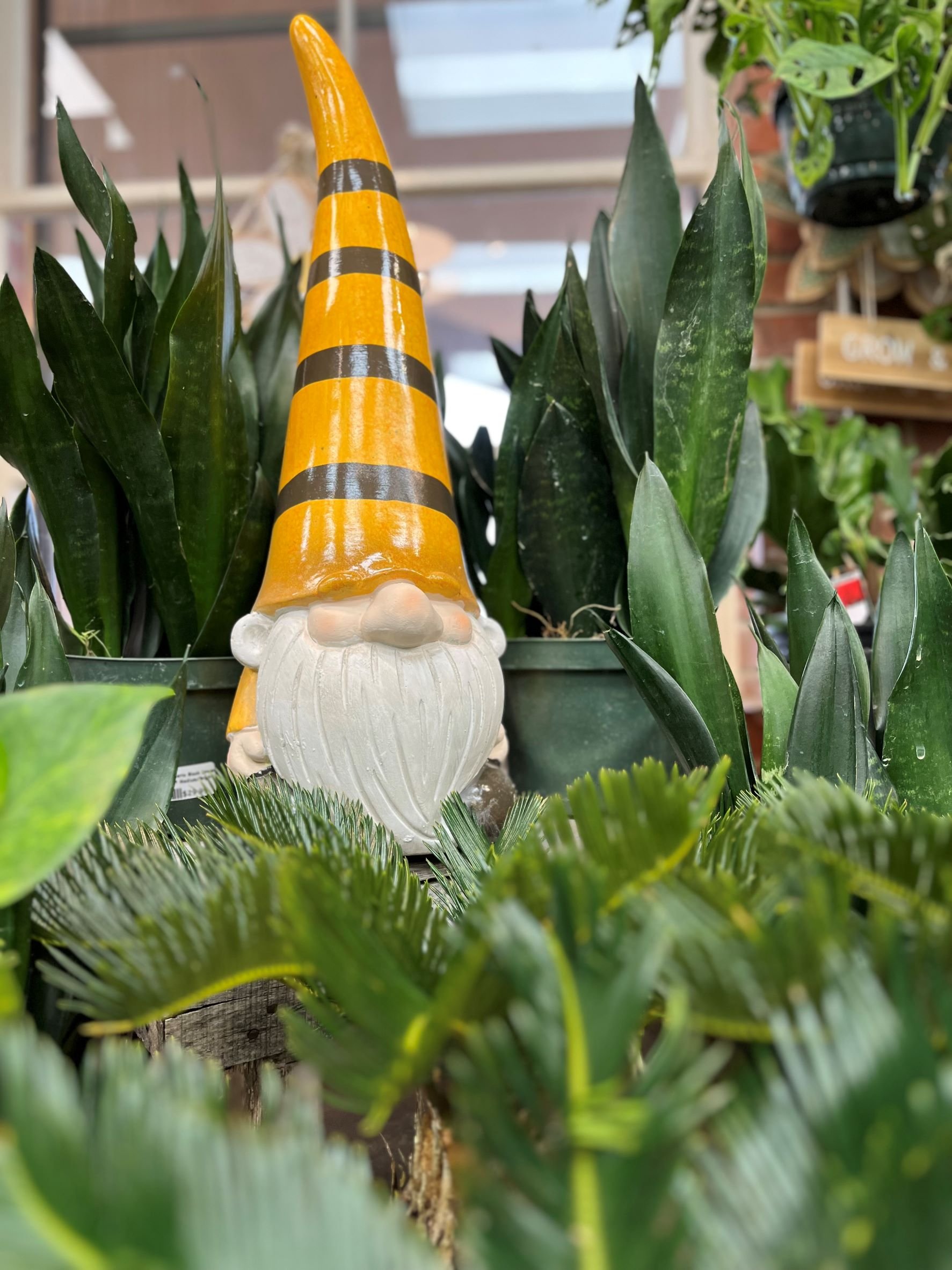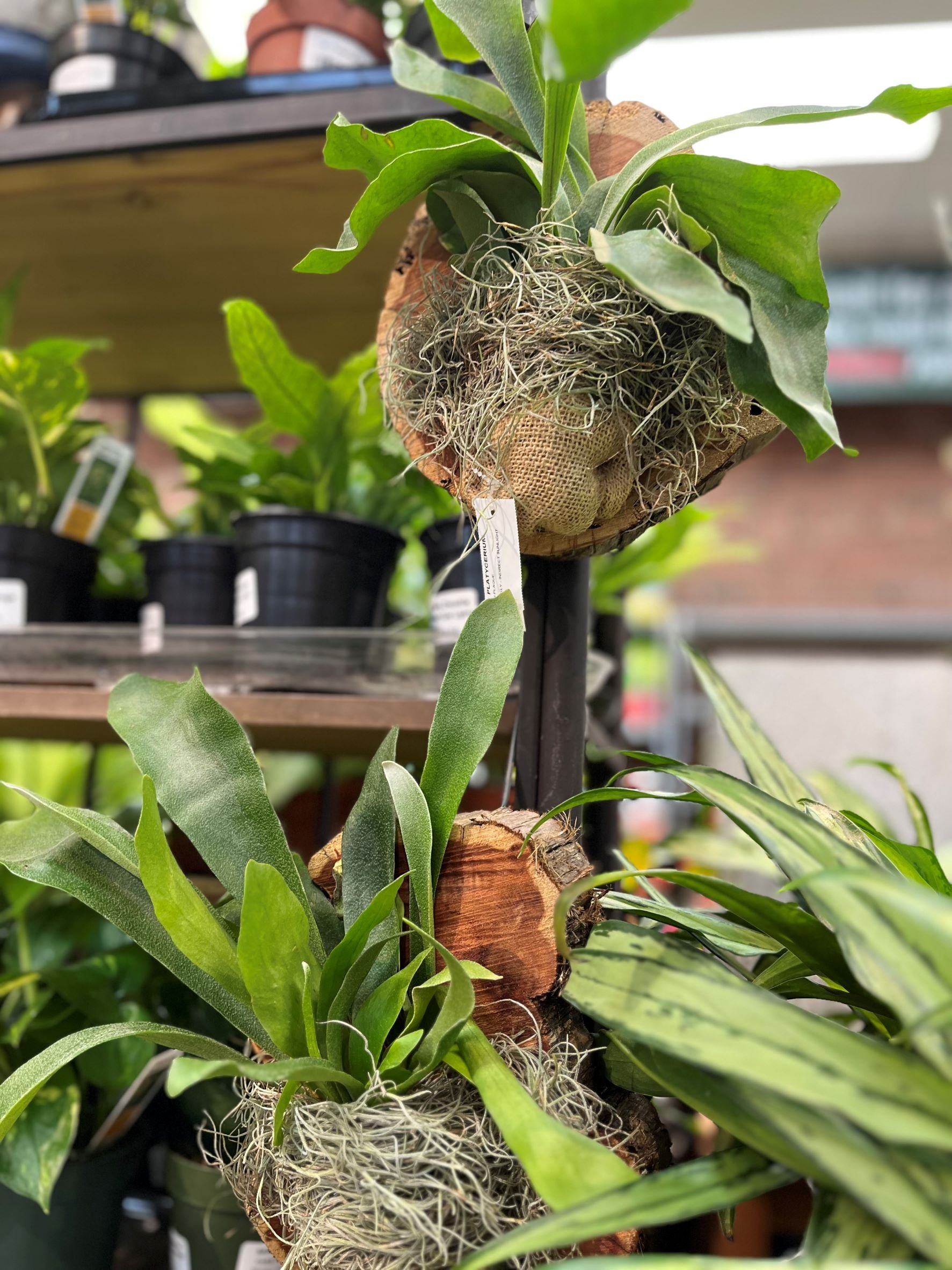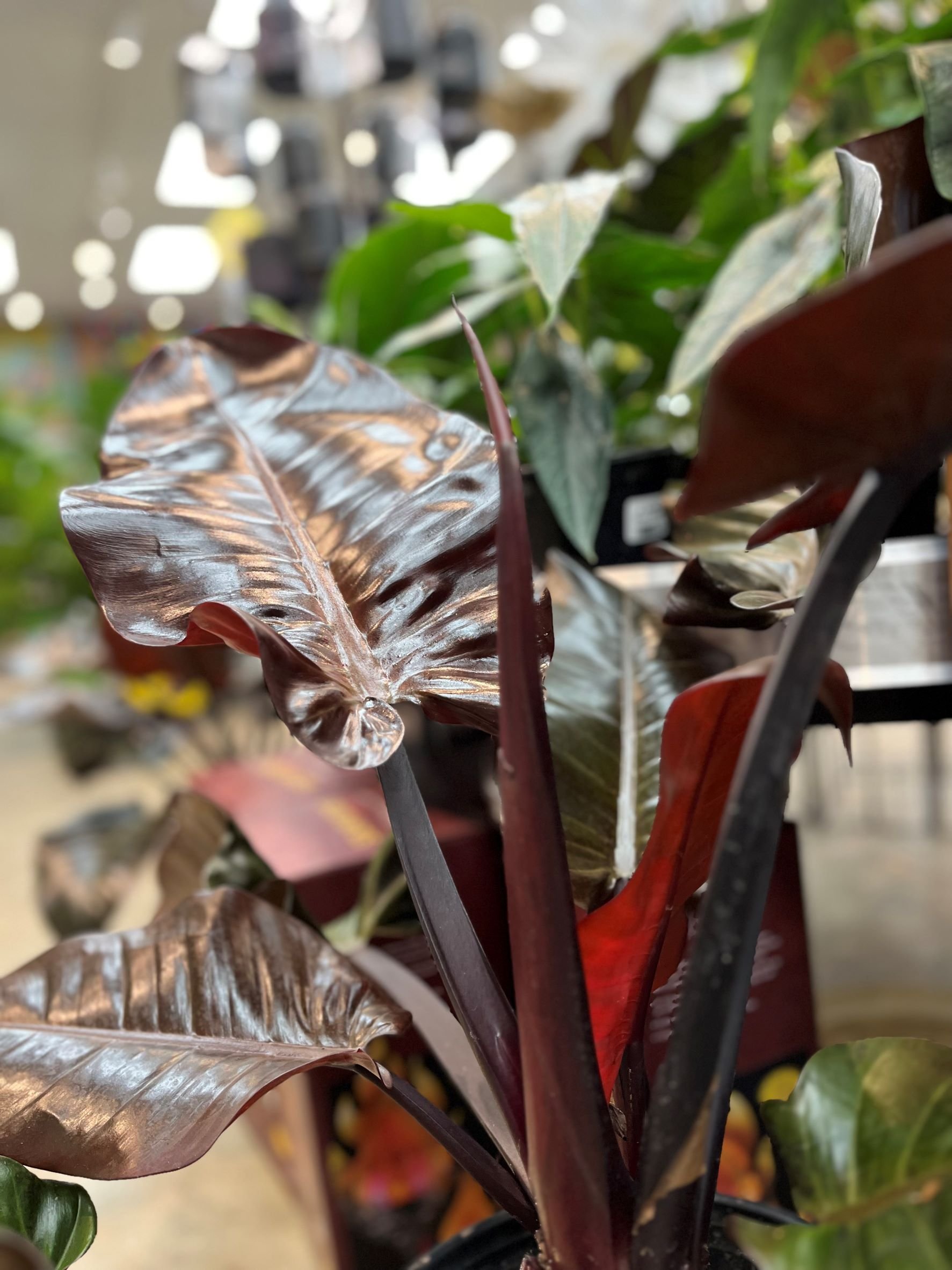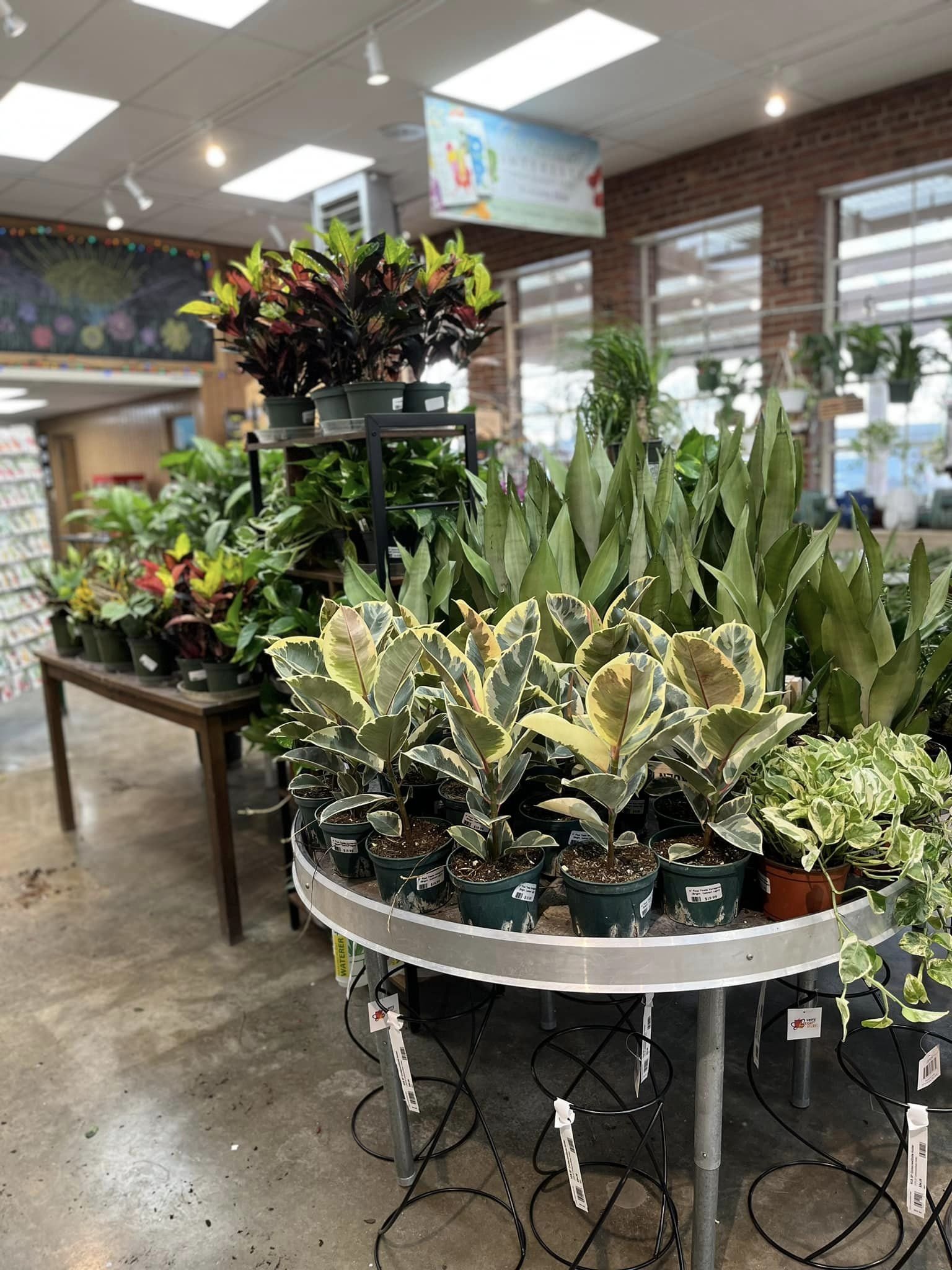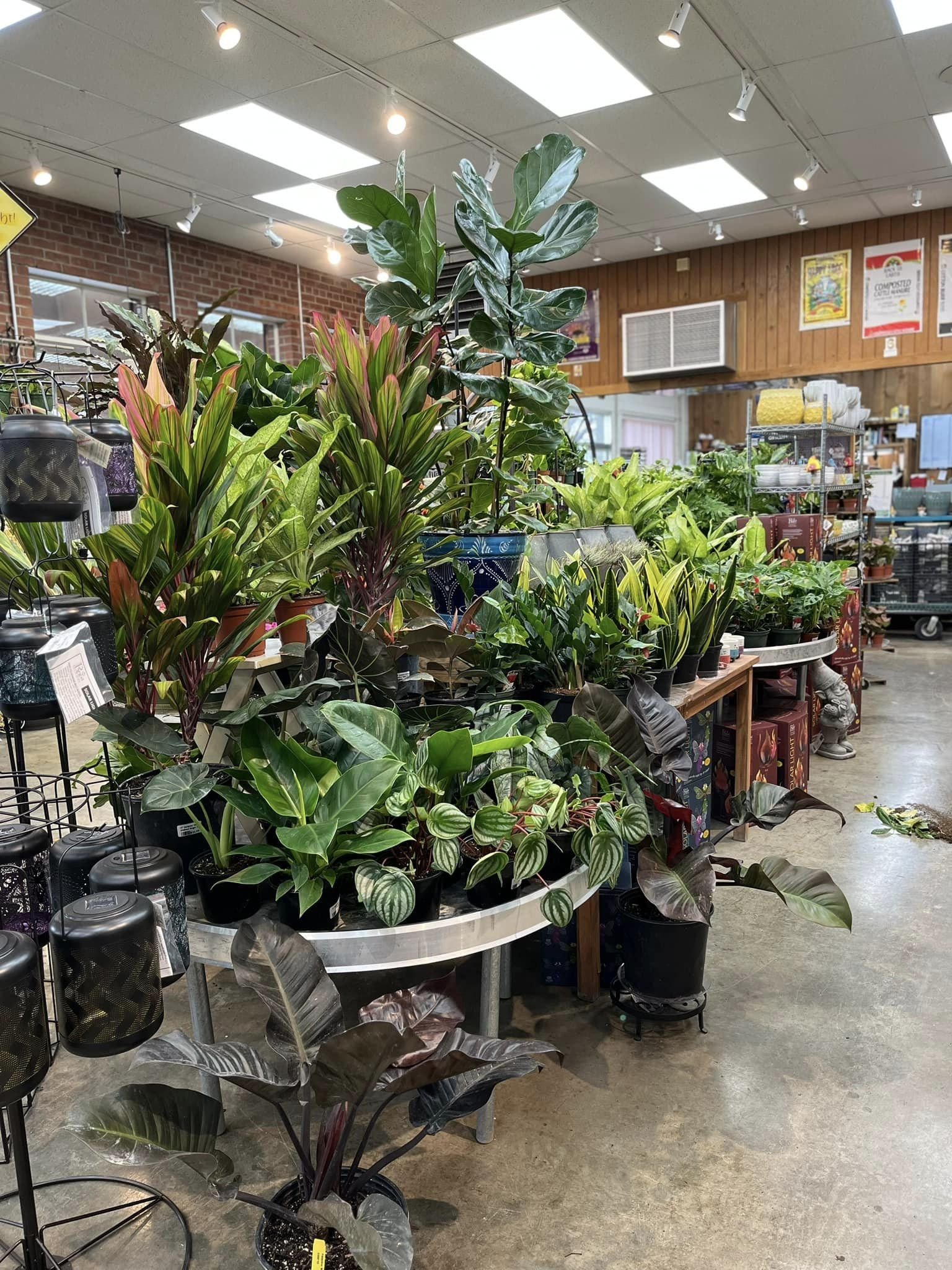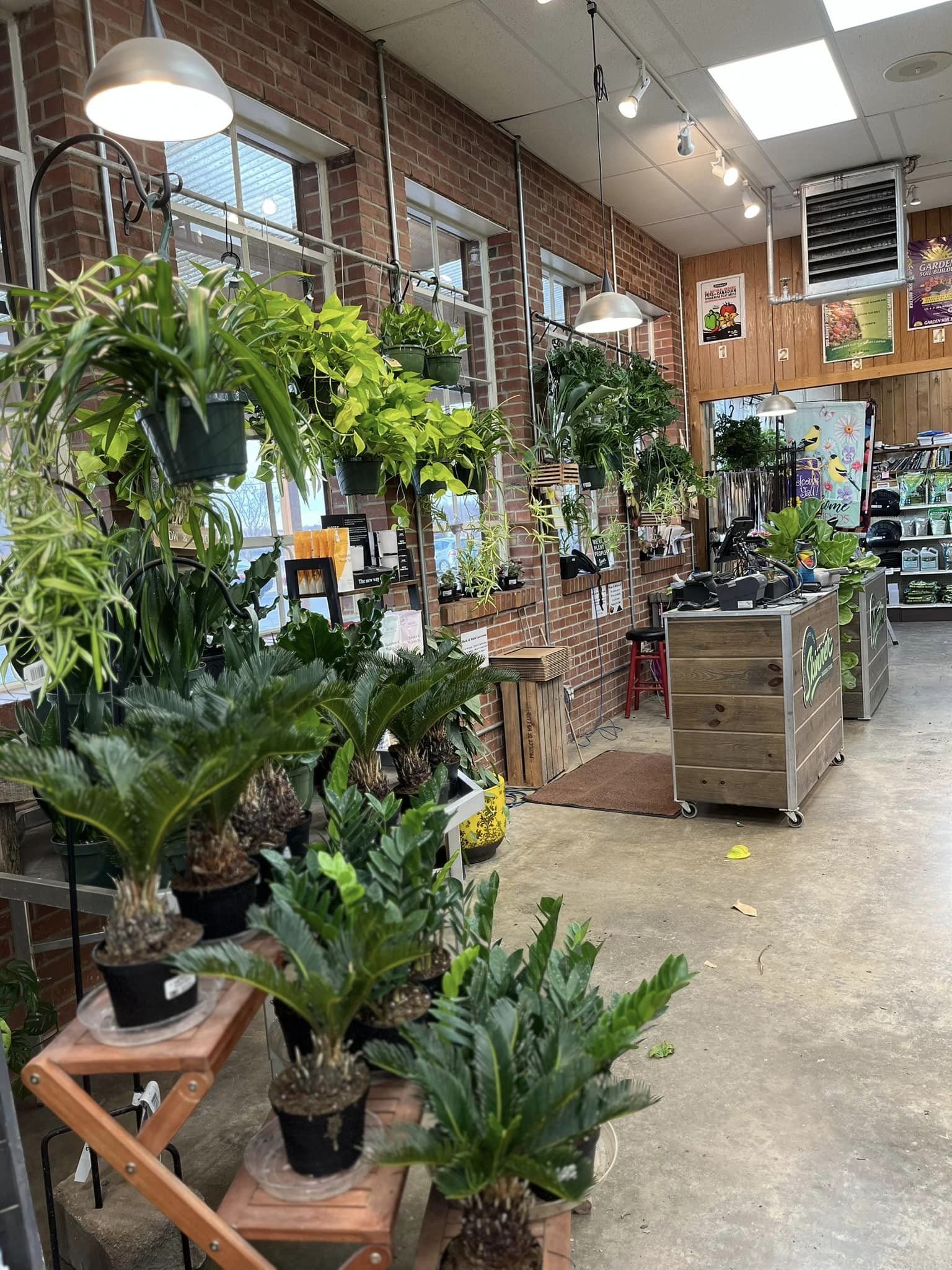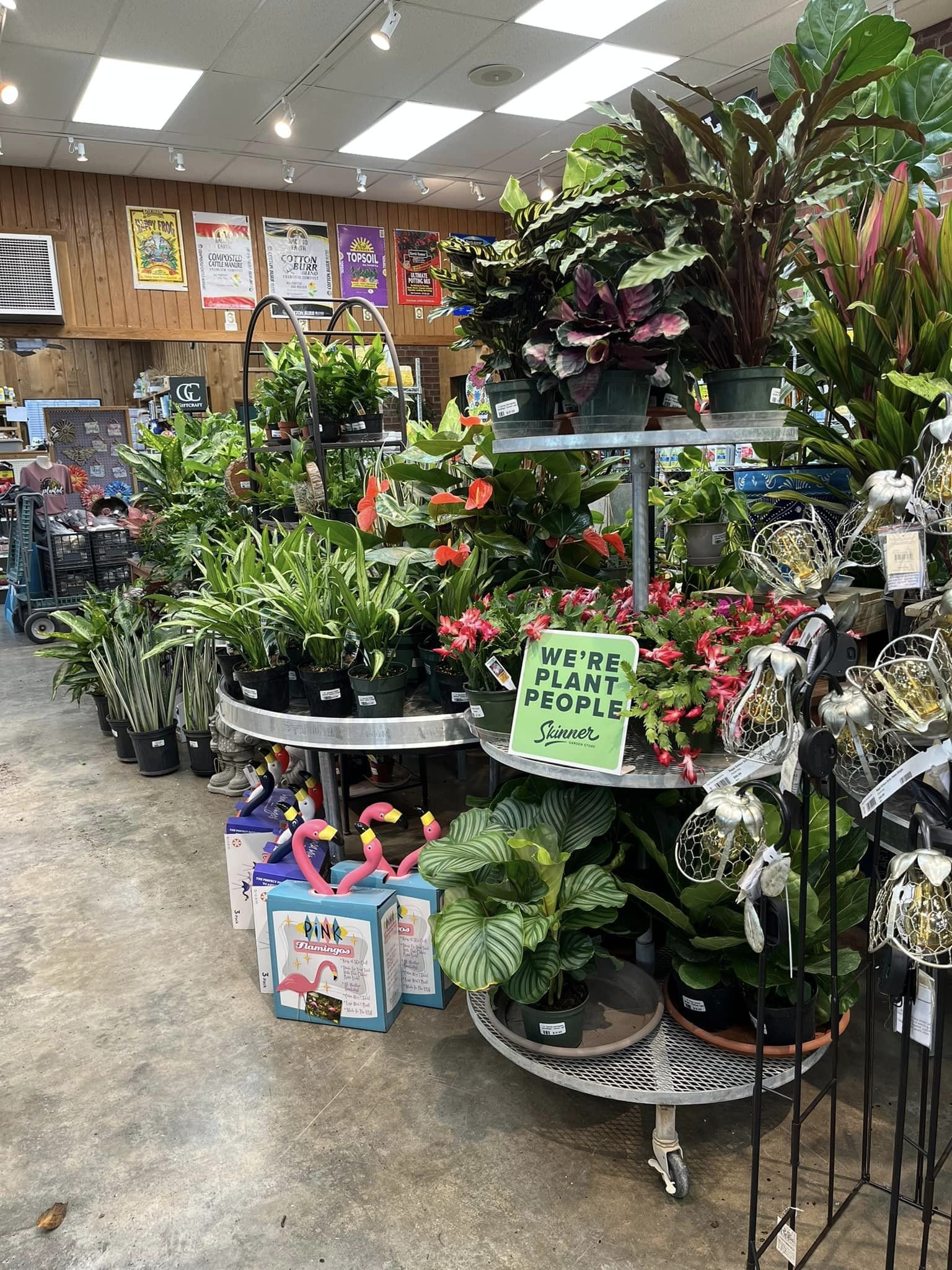that foot is me!
It’s started. Springtime has slowly returned. It’s brought nice temps, spring flowers, a little too much wind...and some unwanted visitors... moles.
It’s started.
Springtime has slowly returned. It’s brought nice temps, spring flowers, a little too much wind...and some unwanted visitors... moles.
Or, maybe it was just one unwanted visitor... only one mole. It’s hard to say for sure, but I can tell you that since “dealing” with the “uninvited” guest, the disruption has gone away. Problems solved... at least for now.
I’m sure that will change.
If you’ve ever battled moles in your own yard, you know what I mean. They tend to have friends. And getting rid of one only seems to open the door for the next one. More unwanted guests!
Unfortunately for them, I have a very low tolerance of party crashers. I reacted quickly to this one, dusted off the mole traps and got them into position. Two days later, I came home to find one of them sprung. Game over.
Now I’m on the lookout for fresh activity, and when I see it... watch out!
Cameron Rees, General Manager
Moles, I’m waiting for you. I’m watching for you. Consider yourselves to be on double secret probation from this point forward.
“It’s time for someone to put their foot down, and that foot is me!” — Animal House
You’ve been warned.
— Cameron
“The best time to plant a tree was 20 years ago. The second best time is now.” — Chinese Proverb
“Thymely” Advice
Crabgrass control — what if I missed the red bag?!
We spend a lot of time in February, March and April talking about “The Red Bag.”
The Red Bag is Fertilome For All Season’s Crabgrass Preventer. It does a great job preventing crabgrass, if you put it down in time. And, “in time” means before now.
So, if you missed your chance at “The Red Bag,” what do you do? Well, time for Plan B!
Plan B is Hi-Yield Turf and Ornamental Weed and Grass Stopper.
This crabgrass preventer is unique. It not only prevents crabgrass from coming up and becoming a problem, it can also be used to take out young crabgrass early in the season. This ability to both provide pre- and post-emergent control means you’ve still got a crabgrass solution for a few more weeks.
Just follow the label directions with your application and then get it watered in as soon as you’ve got it applied. It can effectively take out crabgrass up to 4 weeks after crabgrass germination, so you’ve got a little more time... but not much!
Pest Control on Fruit Trees
First, you get blooms. Next, come the fruits. Then, come pest problems.
Keeping fruits intact so you can enjoy them at the end of their season sometimes takes a little extra work.
There are a variety of different insect and disease problems that can crop up each season, and for pretty much all of them, prevention is the solution.
But knowing what to put on and when can be confusing—to say the least. All crops are a little different, and a lot of the problems they face are also different. Add to that, pest control products are less broad spectrum than they used to be, so knowing which specific product to use and when to apply can be challenging.
Having a little resource info at your disposal can be a big help.
Kansas State University Extension has some good publications that can help. There are a couple listed below, but there are certainly more. Just hit Google for the topic you’re looking for and include Kansas State University Extension in your search.
Both of these do a good job describing the various problems that can arise and the best control timing to prevent it. However, even with all this information, knowing exactly what to do can still be confusing. That’s where we can offer some additional help.
Come on in and talk with us. We’ll do our best to explain your options and get you going in the right direction.
Good Luck!
opening day?
What a great day!
A couple of weekends back, we celebrated our Spring Kick Off. There were hot dogs, there was beer from Norsemen Brewing Company, there was phenomenal weather... and there were LOTS of people. It was so much fun!
I don’t think we could have scripted a more perfect day… and I needed it.
Winters get long out here. Day after day of dreary weather and limited retail activity, leave me longing for springtime and the crowd it brings. It’s kind of like anticipating the first blooms of spring... I can’t wait for our customers to return.
The weekend didn’t disappoint.
I was blown away by the crowds! It’s nice to see the nursery full of plants again, and it was great to see customers walking through. Thanks to everyone that came out and made the weekend special. I hope you enjoyed it as much as I did.
On a different note, but still focusing on spring...
I snuck over to the Ward-Meade Botanic Garden the other day to check things out. There are a couple big events coming up there over the next few weeks that you don’t want to miss, Tulip Time and Tulips at Twilight, and I wanted to see how things were coming. The tulips weren’t blooming yet, but other things were. It was a beautiful walk.
Even though the tulips weren’t blooming yet, it was obvious an impressive show is on its way. Things start up out there this weekend. Take my advice and check it out.
And, Happy (belated) Easter!
—Cameron
Cameron Rees, General Manager
No Sad Tomatoes
Mother Nature is going through another mood swing this spring. Up and down temperatures with rain, snow and freezing temps with an occasional nice day thrown in. It’s those nice days that get you in the mood to start thinking about your garden. When it comes to putting vegetable plants in, keep those up and down temperatures in mind. Crops like cabbage, broccoli, cauliflower, spinach, lettuce and brussels sprouts are great for these conditions. Seeding radish and turnips at this time is also ideal. There is also time to get your seed potatoes in along with onions, rhubarb, asparagus and strawberries.
Misty Brown, Lath House Manager
Now, the important part of this article….what NOT to plant at this time. You will be tempted to get a jump start on those tomatoes… DON’T.
Even though we may get some really nice days in the 70s and 80s, the night temperatures can still dip into the 30s and 40s. These temperatures will not kill your plants, but they will damage and shock the plant which leads to little or no growth until the temperatures are constantly warmer. Soil temperature is also another very important factor when planting tomatoes, peppers and other warm season vegetables. The soil temperature needs to be at least 55 degrees. Cold soil will have the same effect on your plants as the air temperature.
Long story short… planting your tomatoes outside when air temperatures and soil temperatures are not prime will not get you a bigger tomato faster. Waiting till the temperatures are prime will get your tomato growing rapidly and would catch up quickly to the ones you would have planted early!
the bark is back
We’ve been out since last season, but it’s back in stock… All Bark Cedar Mulch.
“Thymely” Advice — Rust Control
If your trees have had a rust problem in the past, get ready.
Rust is a fungal disease that plagues certain types of apples and pears. It causes numerous rust-colored legions on the leaves, resulting in sever defoliation during the summer. It can also leave damaging legions on the fruits.
Prevention is the key.
Think of preventing rust like preventing a sunburn. You apply sunscreen before a day at the beach, not after. If you want to prevent rust, you need to do the same... apply your rust protection before leaves get infected.
And much like sunscreen, it’s not a one-time application. Sunscreen wears off or washes off, right? Well, the same is true with fungicides used to prevent rust. Your trees protection will wear off over time, and it will need to be reapplied to keep your tree protected.
Rust can be devastating, so prevention is critical to keep trees—and the fruits they are carrying—healthy.
You have two choices...
Do nothing and live with the consequences. Bad choice.
Tackle the problem with a preventative fungicide program. Much better choice!
A fungicide program is just that. It’s a series of preventative sprays to protect foliage and fruits from this disease. That means spraying more than once.
Just like the sunscreen example, a one-time application won’t do it. The product you apply will degrade in the sunlight, it will wash off with spring rains, and new growth will develop after a spray application and that will be unprotected. It will take multiple applications from now through the end of May to protect things.
Here are two ways to tackle the problem.
The first is a traditional approach with a fungicide by Fertilome called F-Stop. Start applying it in early April, after the trees are done blooming, and continue through May, following label directions, repeated as directed.
The second option is a more organic approach, using two Fertilome products, Fungicide 5, a fairly new fungicide that utilizes beneficial bacteria, and Copper Soap Fungicide, a long-time garden fungicide. Alternate applications, following label directions and the recommended spray intervals.
Here are a few additional tips...
Make sure you thoroughly coat all leaf and fruit surfaces when you spray. Remember, your application is a preventative coating. Just like that sunscreen, if you miss areas, you’re going to get burned.
If you are tank mixing, make sure you add in the Hi-Yield Spreader Sticker. It will greatly enhance your spray application while at the same time increase what stays on following a rain.
Stay on schedule! Follow the recommend reapplication timing found on your product label. If it says to spray every 7 to 10 days, then you need to reapply in 7 to 10 days. Remember, you are applying a protective coating on leaf and fruit surfaces and that coating must be maintained. If your protection wears off, infection can occur, even if you’ve been doing a good job up to that point.
As always, if you have questions, just ask!
—Cameron
Free beer!
Spring is here... at least I think it’s mostly here!
The calendar now says it’s spring and the weather is looking better, so I’ll take it! The grass is starting to green up, and the flower buds on trees are swelling up... a few are even showing some color. We’re headed in the right direction.
We’re bound to see a few cool nights yet; it’s still too early to think we passed all that. Our average last freeze date is mid to late April, so we still have some time yet before we start planting summer crops like peppers and tomatoes, but as for everything else... it’s time to go for it!
Over the last few weeks, we’ve been starting new crops and receiving loads of new plant material. With the colder temps we just went through, however, we’ve held off bringing things out onto our sales lot. That’s all changing this week!
We’re going through a major transformation right now, and plants are coming back out onto the lot... finally! Just like spring growth, our plants are starting to peak back out. And the timing couldn’t be more perfect, because this weekend is our Spring Kick Off Weekend.
Cameron Rees, General Manager
This Saturday and Sunday we’re celebrating the new season! There will be all kinds of great plants, all kinds of great gardening products and lots of staff on hand to answer questions and offer inspiration. We’ll have some snacks to enjoy, and our friends from the Norsemen Brewing Company will be on hand on Saturday serving up some of their finest... that would be beer. And trust me, they brew great beer!
There will be some weekend specials, free issues of our new Garden Guide catalog, and we’ll have lots of things for the veggie garden — like asparagus, strawberries, onions, potatoes and early spring transplants, as well all kinds of garden seed. There will be a lot to check out!
We’re excited spring is here, and we’re looking forward to celebrating this weekend. We hope you can join us.
Cheers! 🍻
-Cameron
What’s New?! Hellebores
Misty Brown, Lath House Manager
As I’m writing this, we are coming off of a day where is rained then proceeded to snow. Today it’s 43 degrees and we just had a 2-minute snow shower and tomorrow night the low is 15. As your reading this now it is probably 70 degrees outside, maybe some rain… Mother Nature sure is a strange lady when it comes to spring in Kansas.
Anyways, spring even though the weather is crazy it does bring some beautiful blooms. One in particular is Hellebores a.k.a. Lenten Rose a.k.a. Winter Rose a.k.a. Christmas Rose — which, actually, isn’t a rose at all. It is a shade perennial that shows up in early spring with gorgeous cup shaped flowers. Some flowers are upward facing while some hang like bells off of the stem. Lenten Rose come in shades of pink, white, lime green and, sometimes, near black. They make a great addition to any shady garden and add a pop of color when everything else is just starting to wake up.
“Thymely” Advice
Low Maintenance Landscape Beds
Springtime is garden clean-up time. And just like any other gardening project, there are easier ways to do things and harder ways to do things… I’m a big fan of easier!
Through years of gardening, I’ve picked up a few tricks. I’ve also learned some ways are easier. Some ways produce better results. And, if I can accomplish both at the same time... well, that just makes good sense!
So, here are a few things that make my gardening work easier while also producing better results.
Chop and drop.
Springtime brings a lot garden “clean-up.” Ornamental grasses and perennials are being cut back and that creates a lot of debris. Don’t throw that away! In my garden, all that material—along with all the tree leaves that have blown in—go right back onto my landscape beds to function as mulch, eventually recycling back into the soil and feeding my plants. I chop it up small so it filters down into place. Sometimes I even bring my push mower in if the project is big enough. My spring clean-up is quick and easy, and my garden grows better because of the process.
Touch up mulch.
Even with the “chop and drop” method above, I still have areas in my garden that need a little more. Aim for about 3” of shredded wood mulch. That keeps weed growth down to a minimum, dresses things up, eliminates mud in the garden, and makes plants happy. Mulch should be in place year-round, but from time to time, it will need to be top-dressed as it decomposes. This time of the year is a good time to give your mulch a spring “tune-up” if needed.
Apply a pre-emergent.
If you want a little extra help with weed prevention, use a pre-emergent in your landscape beds. Hi-Yield Turf and Ornamental Weed and Grass Stopper—applied now, following label directions,—is the help I use. Applying it late winter/early spring and again in late summer/early fall provides an extra layer of weed protection, and fewer weeds means less maintenance.
Feed plants.
I like to fertilize landscape plants late in the fall and then again in the spring, like now. Use Fertilome Tree and Shrub Food for all your woody plants and Fertilome Gardener’s Special for your perennials.
Fill in gaps.
If you have areas that still need to be planted, get them filled in. Spring is a great time to plant as well as a great time to divide and replant perennials. Remember, the fewer gaps you have, the less weed pressure you’ll be fighting. If you need help figuring out what you should plant, come ask us!
Prune things.
If trees or shrubs in your landscape need some corrective pruning, do that now before new growth starts. Nothing grows exactly the way you need it, so plan on pruning, and plan on doing it on a regular basis. All gardens need a little “adjustment” from time to time.
There you go, those are my tips for making my spring clean-up a little easier and a lot more successful. Now, give them a try in your own garden.
Good luck!
-Cameron Rees
Red Bag Reminder!
*
Red Bag Reminder! *
Don’t forget to get your “Red Bag” — Fertilome For All Seasons Crabgrass and Weed Preventer, applied and watered in soon... unless you like crabgrass!
I found you!
I’m excited to see some colorful signs of spring!
A few daffodils came into bloom in our yard over the weekend; and, right next to them, the swollen buds on some creeping phlox were beginning to crack open and show some color, too.
It’s only a few things , but I’m excited nonetheless. It’s starting to happen!
The upcoming weeks will bring a lot of changes. As nicer days continue to win out over colder ones, more and more will wake up, and spring colors will be much easier to spot.
Cameron Rees, General Manager
If you haven’t already done it, it’s time to head outside and get things cleaned up. Grasses and perennials need their old tops cut off... and don’t throw them away. Put them on your compost pile. (And if you don’t have a compost pile, it’s time to build one!) Roses should be cut back now, too, as should clematis. If you need to do any touch up pruning on trees and shrubs, you’d better get on that while there’s still time.
Here at the store, our spring planting season is under way, too. New plant deliveries have started arriving, and—little by little—the sales lot will be filling back up.
Things are changing... everywhere!
As always, if you need any help with anything, just stop by the garden center and let us know. We’re here to help!
—Cameron
*Please Note: We have transitioned back into our normal in-season business hours!
Monday-Friday: 8:30 a.m.-6 p.m.
〰️
Saturday: 8:30 a.m.-5 p.m.
〰️
Sunday: 11 a.m.-5 p.m.
〰️
Monday-Friday: 8:30 a.m.-6 p.m. 〰️ Saturday: 8:30 a.m.-5 p.m. 〰️ Sunday: 11 a.m.-5 p.m. 〰️
what’s new?
Onions & Potatoes
Seed potatoes and onion sets arrived this week, and rumors are that onion plants should be here by the weekend. It’s time to start planting that garden!
Thymely Advice
It’s time for the red bag
It’s that time of year... time to put down crabgrass preventer.
For most folks, that’s going to be Fertilome All Seasons Crabgrass and Weed Preventer—the one in the bright red bag. Just one application early in the spring provides solid crabgrass and weed control throughout the spring and summer season. It’s easy to apply and easy to use.
It’s also the first step in our 3-Step Lawn Program.
Just three easy steps—crabgrass preventer in the spring and two applications of fertilizer in the fall—and you’ll be giving your lawn the best chance to succeed.
Lawn care isn’t hard, but you’ve got to know what to put down and when. That’s key.
Here are a few additional lawn application tips.
Know your square footage. All lawn products are meant to applied at a specific rate for maximum effectiveness. Apply too much or apply too little, and the results will be disappointing. If you need help figuring out how much product you need, we can help.
Apply evenly. The best way to achieve an accurate, even application is to calculate the correct amount to be applied, then apply it a little bit at a time using multiple passes over the same piece of ground to even out skips, gaps and overlaps.
Water things in. Unless label directions indicate otherwise, no application is fully “applied” until it’s watered in. Most of the time rainfall will take care of that, but if extended dry weather is expected, start irrigating.
Clean things up. When you make an application, granules will end up on driveways, sidewalks and the street. Take time to clean hard surfaces off before watering your application in. A leaf blower works great for blowing lawn products back into the lawn where they belong. This helps prevent staining of pavement as well as reducing runoff into storm sewers, ditches, creeks and—ultimately—our rivers.
Ask for help. If you’re not quite sure what you’re doing, or you just need a little advice, please ask. Lawn care isn’t hard, but it can sure be confusing... and that’s why we’re here!
Beer & Nuts
Sometimes, weird things happen. This winter, I was taking advantage of a nice day to clean my gutters. Nothing too glamourous, nothing too unusual, just cleaning out lots of leaves, like I do several times a season. I was almost done, finishing up the last section of guttering on the side of the house, when I encountered a little more than dead leaves. I found a beer bottle — in my gutters.
Sometimes, weird things happen.
This winter, I was taking advantage of a nice day to clean my gutters. Nothing too glamourous, nothing too unusual, just cleaning out lots of leaves, like I do several times a season.
I was almost done, finishing up the last section of guttering on the side of the house, when I encountered a little more than dead leaves.
I found a beer bottle — in my gutters.
And not just any beer bottle, an Italian import “Peroni” beer bottle.
Dead leaves, acorns, maybe the random tree branch… that’s what I expected to encounter. A beer bottle? Not so much.
How it got there, I haven’t a clue. All I know is, it wasn’t me!
We do have some rowdy squirrels in the neighborhood, but I’ve never caught them throwing back a cold one from high on top my roof… or anywhere else in the yard, for that matter!
Like I said, weird.
But you know what isn’t weird? Spring!
I think it’s fair to say, spring is almost here. The nice days are starting to outnumber the cold days. The slow the grip of winter is starting to slip and the pull of spring is starting to win out.
If you haven’t noticed yet, things out in the landscape are starting to poke up out of the ground. And, although most plants still look pretty dormant, it’s obvious we’re headed in the right direction.
Things are ramping up here at the store as well. Little by little, changes are happening and we’re getting ready. The new season is upon us!
As always, if you need help with anything, come see us. And in the meantime… watch out for rowdy squirrels!
Cameron Rees, General Manager
How About a Home Orchard?
Fresh fruit from your own back yard starts with planting fruit trees.
There are a lot of popular tree fruits we can grow in our landscapes: apples, pears, cherries, peaches, nectarines, plums and apricots. There are also some great native choices like persimmons, serviceberries, paw paws and sandhill plums.
But, you can’t pick them if you don’t plant them!
All these fruit trees can be planted anytime the ground isn’t frozen, but spring and fall are always more popular. We stock most of these varieties throughout the year as potted trees, ready to be taken home and planted anytime you’re ready.
We also bring in many of the more popular varieties bare root, and offer them through much of March and April. Bare root trees are just what they sound like, trees with bare root. More specifically, these trees have been harvested while they were dormant, removed from the soil, then stored in large refrigerated warehouses under cold temps, high humidity and frequent watering to keep the roots moist.
Early in March, our growers ship these trees to us on refrigerated trucks, and then we store them in our own cold storage facility keeping them cold, dormant and properly watered until they are ready to be taken them home and planted. Bare root fruit trees transplant readily, establish more quickly, save you money, and are a lot easier to transport home.
We have potted trees ready for planting now and our bare root trees should be arriving around mid-March.
Keep in mind our bare root fruit trees are a one and done crop. We bring in one order of bare root fruit trees each spring, and when they’re sold out, that’s it until next year. So, if you’re wanting to take advantage of the benefits of planting bare root, don’t wait too long.
If you’d like more information about our fruit trees, as well as other edible fruit and nut crops for your garden, check out our catalog.
As always, if you have questions about fruit trees or any garden plants, just ask!
What’s New?!
Cool Houseplants from Proven Winners!
A lot of you know the brand Proven Winners; they are known for their line of annuals, perennials and shrubs.
Did you know though that they also have a line of houseplants?
We were at a show in Kansas City last year and Proven Winners had a booth and I knew that I needed to bring this houseplant collection to our customers. I’m pretty excited about it and the plants looks amazing!
Misty Brown, Lath House Manager
Mudbugs, Beer and a Bib
We recently traveled to New Orleans. My wife and I went down there to watch K-State play Alabama in the Sugar Bowl. That game didn’t go so well, but the trip was a lot of fun.
We recently traveled to New Orleans.
My wife and I went down there to watch K-State play Alabama in the Sugar Bowl. That game didn’t go so well, but the trip was a lot of fun.
We had some travel companions on our trip: our son and two of his close friends, one of his roommates and one of his cousins. Together, we experienced the Big Easy for the first time.
Here are some quick observations…
It rains a lot in New Orleans.
Bourbon Street is a little crazy,.
And, crawdads are a mess to eat… but they sure do taste good!
While we were there, I shared a platter of these rare treats… crawdads, that is… with my nephew.
My nephew is originally from back here in Topeka. However, for the last few years, he’s been down in Tuscaloosa attending college at the University of Alabama. (That’s why he’s in ‘Bama gear in the pictures below instead of sporting the much more attractive purple and white. 😊)
During his time down south—besides developing a love for the Crimson Tide—he’s also discovered he really loves crawdads.
That’s why, when I saw them on the menu, I knew we had to get them. And guess what? They were amazing!
There’s not a lot of meat on a crawdad, so you really have to work for what you get. There’s a lot of pulling and cracking and digging to get to get to the good parts. Plowing through our platter was a slow process, but it was good,—and it was messy! Everything was dripping in an amazing spicy, garlicy butter sauce… there was a reason the meal came with a bibb!
In the end, it was worth it. They were amazing! We didn’t finish the whole platter; but, despite the doubts of the rest of our table, we got pretty darn close.
What a treat!
The rest of the trip was fun as well. There was more amazing food, an exciting Sugar Bowl parade and of course, Bourbon Street. And, take my word for it, that place is crazy.
The game didn’t go as well as we had hoped, but it was still a great experience, and the them spent in New Orleans was a lot of fun.
Back here at the shop, it’s still pretty quiet, but that’s changing a little more every day.
The store is starting to fill up again. We’re starting to reset the back patio and it won’t be too much longer before we start to see plants coming back out onto the lot.
We’ve has some pretty nice days recently. We all know winter is far from over… but it’s getting close. It’s only a matter of time.
If you any help getting ready for a spring that will be here soon, stop by and see us.
- Cameron Rees
What’s New?
When Should I Cut Things Back?
That’s one of the most frequently asked questions we get. And while there is no one right answer, here’s my advice…
The best time to cut most things back is late winter. That’s normally going to be sometime in March, maybe late February, it all depends on the weather.
So why wait until the end of winter? First, it’s always a good idea to leave the tops of perennials and ornamental grasses intact until the worst of winter is behind us. Top growth, even though it is dried up and dead, helps provide winter protection for overwintering crown and roots.
Second, these tops also provide visual interest to our winter landscapes. Our winters can be rather drab and bleak. It’s amazing how a few clumps of ornamental grasses and some dried up seed heads can add some “life” to a garden during the dead of winter…especially when you add a little snow into the picture.
Lastly, the seedheads of many plants serve as valuable winter food source for birds. And what better way to add a little touch of color to a winter landscape than drawing colorful songbirds into the garden!
Get those pruning tools ready!
-Cameron Rees
Where Have We Been?
We’re hiring a Store Manager. Houseplants and gnomes. Tips on keeping your houseplants alive Seed starting and veggies.
You may have noticed it’s been a few weeks since we’ve sent out a newsletter. I think it’s been over a month! I’m sorry about that, but we’ve been working on some things in the background that have disrupted our normal schedule. That work is now completed and we’re back into production.
Specifically, we’ve been working on our website. I won’t go into everything that had to be done, but it was a lot as far as I’m concerned. Then again, building websites is not my area of expertise. I’m better off staying in the garden. Fortunately, we work with an amazing individual that really knows her way around this stuff. The rebuild is now done, everything seems to be working again, and the new website looks great. I hope you like it!
One thing you may notice right away - in the little pop up toward the bottom - is that we’re searching for a new person to add to our team. We’re looking for a new Store Manager. Just follow the links to get more info about what we’re looking for and what the position includes. If it sounds like something you might interested in, please apply! I’d love to hear from you.
Now, if being a Store Manager is a little more than you’re looking for, but working at a garden center is still something you think sounds interesting, stay tuned. With the promise of spring not too far off, it will soon be time to start staffing back up for the upcoming gardening season. We’ll be looking for folks that love to work with people and love to work with plants, and if that’s you, please let us know! We’re always looking for a friendly smile and a green thumb to add to the team. Watch the website over the new few weeks for more details.
In the meantime, as always, if you need anything keep us in mind! Our current hours are Monday through Saturday 9:00 a.m. - 5:00 p.m.
-Cameron Rees
What’s New? Houseplants and Gnomes!
Tips on Keeping Your Houseplants Alive
Becoming a houseplant owner can be a little daunting to some people but don’t fret, we are here to help.
Watering! – Water on an as-needed basis, schedules just don’t always work for houseplants. On average, when the top 1” is dry, give it some water. Make sure to let the soil dry between waterings. Cacti and succulents will need less water and prefer an even dryer soil where flowering plants may need a little more. Underwatering is better than over watering, it’s harder for your plant to come back from too much water!
Fertilizing! – The best time to fertilize your houseplant is when they are putting on the most growth which is Spring and Summer. And like watering, don’t over fertilize your houseplant. Read your label for recommendations.
Repotting! – If the roots of your houseplant are going around in circles in the pot it may be time to move it to a slightly larger (1-2” larger) pot. At this time, you can also divide it down if you wish. The best time to repot is Spring and summer.
Pests! - Houseplants are susceptible to many insects including mealy bugs, spider mites and fungus gnats. A weekly inspection and treatment is best to keep populations down. Insecticidal soap will work on a good majority of pests. Fungus gnats start to appear when plants are overwatered. Larvae live in the soil. Let the soil dry out, repot with fresh soil. Insect granules placed on top of the soil and watered in will help also.
Disease! – Some disease can be caused by insects. Also look out for powdery mildew, fungal leaf spot (caused by overwatering and poor air movement) and root rot (caused by over watering). Keep houseplants clean of diseased, dying and aging leaves, avoid getting the foliage wet, apply frequent treatments of Neem Oil to help with the fungus.
We are always here to help with your houseplant needs!
Seed Starting / Veggies
We all know winter is not a busy time outdoors and in the garden. Cold weather and the addition of ice and snow can make it all but impossible to get outside and do things. But that doesn’t mean we can’t still garden. We’ve just got to shift our focus inside.
Houseplants are an obvious one. Tending to the plants in our home give me a much needed “green” boost this time of year. I think a lot of folks feel the same.
But I’m also thinking about more significant indoor projects that revolve around the vegetable garden.
While it’s too early to start planting things outdoors, it’s never too early to start planning for this next season. This is especially true if you’ll be growing things from seed. What seeds to plant, when to plant them, and where to plant them in the garden are all important decisions.
Many of the vegetables, herbs and flowers we enjoy in our gardens can easily be grown from seed. Many grow so quickly, they can easily be directly sowed into the garden when the time is right. (That means when it’s warmer!)
Some plants, however, benefit from being started indoors, when it’s still cold; then, transplanted outside later when conditions are right. The planting time for some of those crops is rapidly approaching.
The crops you want to be thinking about now are the ones that will go out into the garden first. Things like onions, broccoli, cauliflower and cabbage are good examples. There are certainly more and this K-State publication does a good job of highlighting many of them, as well as providing some good information on timing for other common garden crops.
Click on the images above to view larger or print.
And, if you really want to dig deep into it, this is a pretty good presentation from Kansas State Extension Horticulture on starting your first garden. After watching it, I was ready to start my own plans!
Check those out, and if you need any other help, come see us. We’ve got lots of seed to choose from as well as all the seed starting supplies you’ll need to get the job done… And, of course, we love to talk gardening!
Spring is coming. Be ready!
-Cameron Rees
I didn’t mean to scare you!
I might owe you an apology.
In our last newsletter, I shared a story about our dog and his broken heart when our kids come for a visit and then leave. But at first glance – with the headline and the picture – I heard from several folks that they thought the broken heart was mine, and that something had happened to our dog.
Rest assured, Potter’s fine. Sorry for if I scared you!
Cooler temperatures have finally arrived! (Thank goodness! I’m not a big fan of Indian summer.) Now it really feels like fall. That’s what I’ve been waiting for… bring on the sweatshirt weather!
October starts this weekend. That means our Fall Skinner Buck redemption period starts this weekend, too. For the entire month of October, you’ve got a chance to bring all those Bucks back in and spend them just like actual money, using them to pay for up to half your purchase… that’s up to 50% off your purchase! So, dig them out and bring them in.
Skinner Bucks are just one way we say thanks. Without you, we wouldn’t be here. We appreciate your business and hope you always know, we’re here to help. All you’ve got to do is ask.
I can see hints of the front end of fall color out there. Fall’s happening, so get out there and take it in!
Cameron Rees
General Manager
Plant Some Color This Fall
The easy decision is to plant a magnolia. The tough decision is… which one!
Decorate for Fall
It’s that time of year again!
Cool mornings, the scent of pumpkin spice EVERYWHERE YOU GO!! I will say, the only time of year I burn candles is fall. The smells of fall are so rich and decadent!
And with fall comes fall decorating, and who doesn’t love that!
We got our first shipment of pumpkins, gourds and squash in along with lots of mums and pansies. If your ready to get rid of summer and transition into fall we have what you need!
Misty Brown
Lath House Manager
Don’t Forget to Fertilize
Fall is the most important time to fertilize your lawn.
Lawns beaten up by summer are trying to recover, repair and regrow; and fertilizer helps that process.
We use a product from Fertilome called Lawn Food Plus Iron and it comes in a bright orange bag. We just call it the Orange Bag.
It’s time.
If you haven’t gotten yours yet, come on by and we’ll fix you up!


